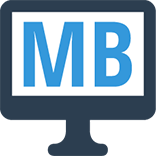

Student Presentation Reflections

Teachers as Paragons
I struggle with articulating this point, but for the purposes of this post, I think that the most valid student-teacher dynamic is not the Jedi Master and Padawan method, but instead one where a teacher serves as a paragon of a small set of skills/attributes and the student’s role is to assimilate their experiences with all of their teachers into their own paradigm.
While this viewpoint is not revolutionary, I find that hubris often prevents a teacher from maximizing the benefit of this approach. Too often I find myself or my peers trying to be too many things to too many students. I think it is important for a teacher to make explicit commitments about which skill or attribute they wish to be the avatar for.
I chose presentation skills as my niche of instruction because I benefited greatly from the Public Speaking and Speech and Debate classes I took in high school. When I was in college, I saw very clearly those of my peers who did not have those same opportunities. I vowed that my students would be afforded opportunities to develop their presentation skills in my class no matter the other classes offered by my school.
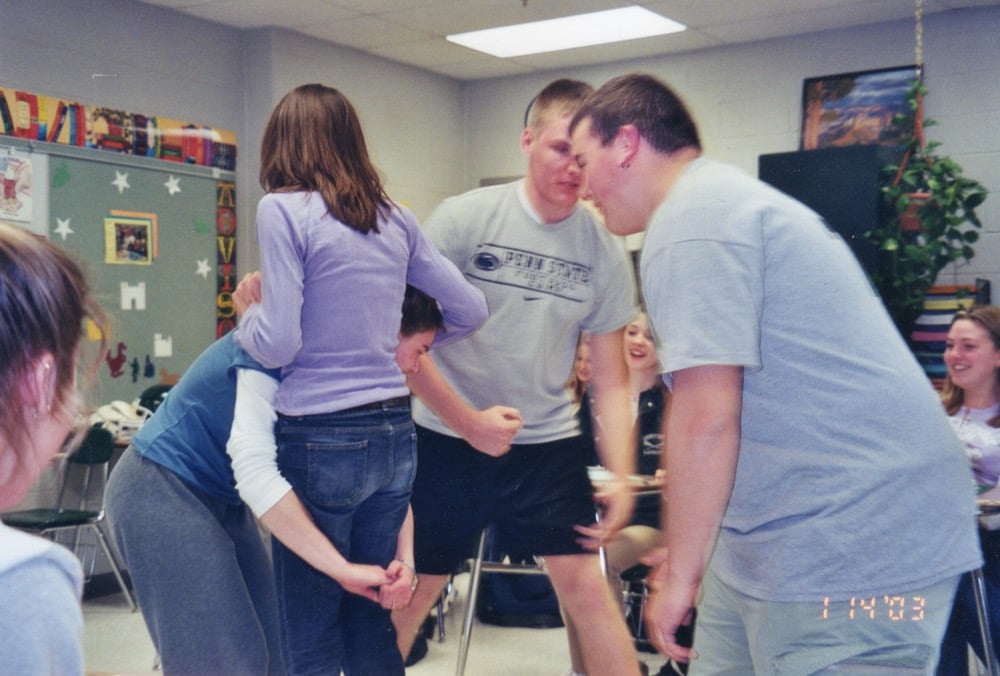
Reflection Process
I plan on creating many posts about the different resources, examples, and assignments that I use to improve my students’ presentation skills. One of the core strategies, and I believe the most powerful, that I use to improve student presentations is a presentation reflection process.
In order to make presentation reflections be a valid assignment, you must film your students as they present—something that my 11th grade Public Speaking teacher Mrs. Shank did for me 15 years ago. Admittedly, being filmed for a presentation was nerve-wracking; however, it was also amazing beneficial. However, instead of recording presentations on VHS cassette like Mrs. Shank did, I record presentations digitally and post them as unlisted YouTube videos .
Recording Presentations
Do yourself a favor and make sure that you use a tripod to record the student presentations. You might think you can cobble together books and tape to hold a camera steady, but this is the wrong call.
- If you plan on using your phone as the camera, you will need a mount to attach it to your tripod , and an improved microphone will certainly help with the audio quality, but it’s not necessary.
- If you plan on using a DSLR or mirrorless camera, then you really need to improve the audio. To improve the quality of the video’s captured sound, I suggest using a shotgun microphone .
Whatever hardware you use, it is important to share with the students the camera’s field of view, so they know where they should stand. The reflection assignment is much harder if the student does not appear on camera.
Reflection Assignment
Recording the presentation is the first step, but students will need to thoughtfully watch their presentations to see areas for improvement. To guide the students’ thoughts while they watch their presentation video, I developed three sequential reflection assignments, one for each of the major presentations in my class.
This reflection process is truly eye-opening. Students are routinely shocked when they watch the video and see the nervous fidgeting or hand-wringing that they swear never happened. The pedagogical impact of a student watching themselves on video is many times more powerful than even the most helpful rubric or feedback.
In addition to reflecting on what happened, an important part of the assignment is also identifying five points on which to improve and coming up with action items for each point. An example of an improvement point and an action item would be:
- I will look up the phonetic pronunciation of the words ahead of time and practice saying them to my teacher.
I always assign this as homework and give students a week to do the assignment after their presentation. I try very hard to make sure the videos get processed, uploaded, and shared with the students as soon as possible to make sure that things are fresh in their mind.
Students sometimes balk at the number of words they have to write. However, since they are writing semi-informally about themselves and have a video to go off, students routinely surpass 1000 words without blinking an eye.
Sometimes when I explain presentation reflections to teachers, they exclaim that it is too much work for them to do or they don’t know how to do the “video stuff” or something else along those lines. The video recording/editing process can be as basic or as advanced as you want it to be. Since video editing is a core part of my multimedia business, there is a lot of stuff that I do to the videos that is unnecessary but a point of pride for me.
In all honesty, a perfectly functional presentation video takes less than 3 minutes more than the presentation itself. Whether you spend 3 minutes or 30 minutes editing a presentation video, that time is returned many-fold by the presentation skill increase of your students.
Hands down, the most consistent piece of feedback I receive from alumni is that they dominate their presentations in college. This makes me very proud. I committed to developing presentation skills in my students since my very first year of teaching. Hearing back from alumni that they are drastically better than their peers at presenting puts a smile on my face every time.
You might also like
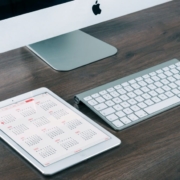
Leave a Reply
Leave a reply cancel reply.
Your email address will not be published. Required fields are marked *
Notify me of follow-up comments by email.
Notify me of new posts by email.
This site uses Akismet to reduce spam. Learn how your comment data is processed .

Student Reflection & Self-Assessment
4 ideas for building self-evaluation into the learning process
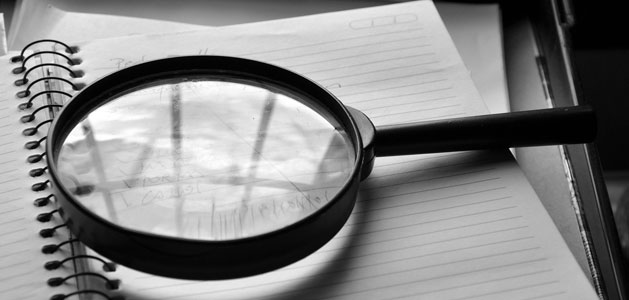
Project-based learning is a student-centered approach to learning, so it is natural to make student self-evaluation an integral part of the process.
Providing time for students to reflect on their work, helps them make connections to previous learning and experience. As Rachel Showalter observes, “students cannot truly improve their product without understanding the content.” Combining this opportunity to deepen learning through reflection with time to self-correct and improve, is an essential step towards meeting standards.
Many educators implementing a PBL or STEM approach use a design process that includes a specific Improve phase that asks students to stop, reflect, and evaluate their work with the intent of returning to the ideation phase to improve upon it.
Asking students to evaluate their strengths, weaknesses, progress, and growth, helps them more deeply understand the causes of their successes and failures and become aware of their learning. This also helps them see more clearly where to focus their energy to have the greatest impact. As they grow their metacognitive skills, students are better able to meet the challenges and thrive in directing their own learning.
Make sure students are clear on standards, learning, and project goals
Before you begin integrating reflection and self-assessment, make sure students have a clear definition or picture of what success looks like. A rubric or checklist can help provide students with criteria they can use to evaluate the success of their work and progress toward academic, personal, and social goals. Successful rubrics and checklists include criteria that provide specific actions students can take to improve their work.
Build in reflection time and procedures for self-assessment
Reflection and student self-assessment require time and are most successful when you add specific procedures for them during the learning process. Work in time for reflection, as well as time to improve their work based on the evaluation.
Here are a few ideas to help you integrate reflection and student self-assessment throughout the process of learning.
Daily Reflection Journals
One of the easiest ways to begin implementing reflection into your classroom is to have students keep a project journal or work log. Provide reflection prompts, or questions, like:
- What new content knowledge did you learn today?
- How did your effort contribute to your success?
- What should you focus on next?
Reflection journals provide artifacts both you and your students can use to see and evaluate growth and progress.
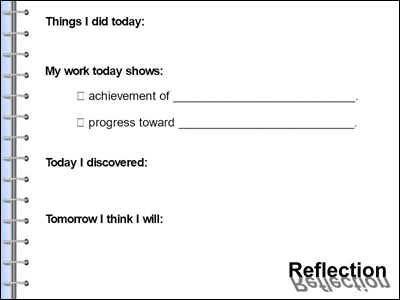
Download a sample Project Reflection page
If journaling seems like it will take too much classroom time, use the last 2 minutes of class for a 3-2-1 exit ticket .
Summative Self-Assessments
In addition to daily journaling, have students complete a summative self-assessment that asks them to reflect on the strengths and weaknesses of their product or performance and evaluate their efforts during the development process. You might ask them to reflect on:
- content knowledge gained.
- project management, leadership, and other skills acquired.
- obstacles and how they overcame them.
- conflicts within a team and their resolution.
- personal insights gained from product and process.
Written self-assessments are a natural part of the reflection process after students complete a project or performance. However, providing time to evaluate their work before it is complete, allows students to improve their work and honors that learning is an iterative process.
Peer Review and Feedback
While peer review may not seem like a form of self-evaluation, reviewing the work of others often helps students more clearly see errors and areas for improvement in their own work. Peer reviews that focus on effective writing, design, and communication provide a useful place to start.
Simply have students “turn-and-talk” with a classmate and complete a “warm and cool” form to direct their feedback.
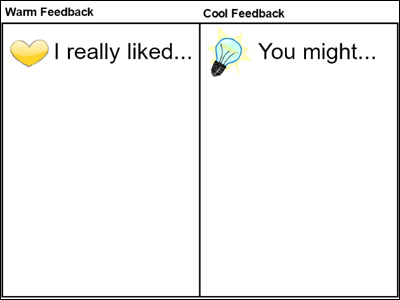
Download a Warm and Cool Feedback sheet page
If students are presenting their work to a small group, provide reviewers with sentence starters to promote critical review and feedback:
- You do a great job of …
- I would love to see more …
- Can you explain …
- What if …
Employing peer reviews during the process with time after for editing, creates a learning culture of growth where students reflect on their work and the work of others and then do the work necessary to improve.
Digital Portfolios
If you want to get serious about integrating student reflection and self-assessment, asking students to craft portfolios of their learning throughout a school year is a must. A learning portfolio is a purposeful collection of student work, combined with reflections about the learning artifacts, that demonstrates student learning and growth over time.

For a portfolio to be a success, students need to be in charge of choosing the work they will include and tasked with explaining via text, audio, or video why it demonstrates growth.
Once again, providing a rubric or similar evaluation criteria will help students choose artifacts of learning and performances that correlate to learning goals, as well as provide a structure for their reflections.
In Conclusion
Reflecting helps students process and organize their learning. As they reflect, students observe how successful they have been during an activity. Then, they work to identify what they learned from their experience.
Combining your formative and summative assessments along with student’s self-reflections and peer reviews can help you paint a clearer picture of student growth and progress.

by Melinda Kolk
Melinda Kolk ( @melindak ) is the Editor of Creative Educator and the author of Teaching with Clay Animation . She has been helping educators implement project-based learning and creative technologies like clay animation into classroom teaching and learning for the past 15 years.
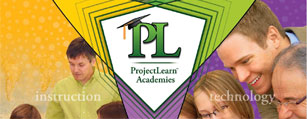
Project-based Learning Professional Development
Creative Educator can help you bring project-based learning to your school.
- What is PBL and why do it?
- Make It Matter! Move it from projects to project-based learning
- Developing the questions for project-based learning
- Write a Great Authentic Task
- It's the Process, Not the Product
- Assessing Project Work
- Formative assessment during project-based learning
- Collaboration
- PBL and Presentations of Learning

Bring project-based learning to your school

Five habits of great classroom coaches
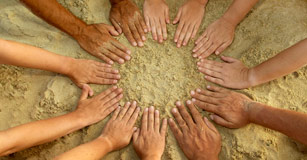
Get the most out of collaboration during student project work
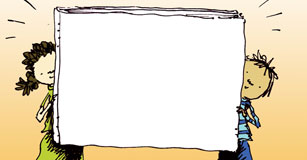
The glorious, wonderful, empty page
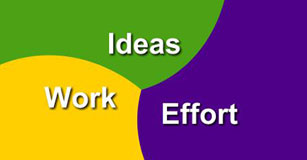
Make It Matter! Move from projects to project-based learning
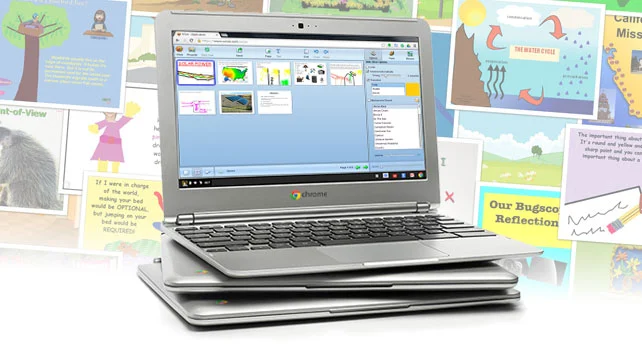
More sites to help you find success in your classroom

Share your ideas, imagination, and understanding through writing, art, voice, and video.

Rubric Maker
Create custom rubrics for your classroom.

Pics4Learning
A curated, copyright-friendly image library that is safe and free for education.

Write, record, and illustrate a sentence.

Interactive digital worksheets for grades K-8 to use in Brightspace or Canvas.
Professional Learning

Digital Storytelling
21st Century Classrooms
Project-based Learning
Teaching and Learning
Informational Text
English Language Aquisition
Language Arts
Social Studies
Visual Arts
© 2024 Tech4Learning, Inc | All Rights Reserved | Privacy Policy
© 2024 Tech4Learning, Inc | All Rights Reserved | https://www.thecreativeeducator.com
Add me to the Creative Educator email list!

- Schools & departments

Structure of academic reflections
Guidance on the structure of academic reflections.
| Term | How it is being used |
|---|---|
| Academic/professional reflection | Any kind of reflection that is expected to be presented for assessment in an academic, professional, or skill development context. Academic reflection will be used primarily, but refer to all three areas. |
| Private reflection | Reflection you do where you are the only intended audience. |
Academic reflections or reflective writing completed for assessment often require a clear structure. Contrary to some people’s belief, reflection is not just a personal diary talking about your day and your feelings.
Both the language and the structure are important for academic reflective writing. For the structure you want to mirror an academic essay closely. You want an introduction, a main body, and a conclusion.
Academic reflection will require you to both describe the context, analyse it, and make conclusions. However, there is not one set of rules for the proportion of your reflection that should be spent describing the context, and what proportion should be spent on analysing and concluding. That being said, as learning tends to happen when analysing and synthesising rather than describing, a good rule of thumb is to describe just enough such that the reader understands your context.
Example structure for academic reflections
Below is an example of how you might structure an academic reflection if you were given no other guidance and what each section might contain. Remember this is only a suggestion and you must consider what is appropriate for the task at hand and for you yourself.
Introduction
Identifies and introduces your experience or learning
- This can be a critical incident
- This can be the reflective prompt you were given
- A particular learning you have gained
When structuring your academic reflections it might make sense to start with what you have learned and then use the main body to evidence that learning, using specific experiences and events. Alternatively, start with the event and build up your argument. This is a question of personal preference – if you aren’t given explicit guidance you can ask the assessor if they have a preference, however both can work.
Highlights why it was important
- This can be suggesting why this event was important for the learning you gained
- This can be why the learning you gained will benefit you or why you appreciate it in your context
You might find that it is not natural to highlight the importance of an event before you have developed your argument for what you gained from it. It can be okay not to explicitly state the importance in the introduction, but leave it to develop throughout your reflection.
Outline key themes that will appear in the reflection (optional – but particularly relevant when answering a reflective prompt or essay)
- This can be an introduction to your argument, introducing the elements that you will explore, or that builds to the learning you have already gained.
This might not make sense if you are reflecting on a particular experience, but is extremely valuable if you are answering a reflective prompt or writing an essay that includes multiple learning points. A type of prompt or question that could particularly benefit from this would be ‘Reflect on how the skills and theory within this course have helped you meet the benchmark statements of your degree’
It can be helpful to explore one theme/learning per paragraph.
Explore experiences
- You should highlight and explore the experience you introduced in the introduction
- If you are building toward answering a reflective prompt, explore each relevant experience.
As reflection is centred around an individual’s personal experience, it is very important to make experiences a main component of reflection. This does not mean that the majority of the reflective piece should be on describing an event – in fact you should only describe enough such that the reader can follow your analysis.
Analyse and synthesise
- You should analyse each of your experiences and from them synthesise new learning
Depending on the requirements of the assessment, you may need to use theoretical literature in your analysis. Theoretical literature is a part of perspective taking which is relevant for reflection, and will happen as a part of your analysis.
Restate or state your learning
- Make a conclusion based on your analysis and synthesis.
- If you have many themes in your reflection, it can be helpful to restate them here.
Plan for the future
- Highlight and discuss how your new-found learnings will influence your future practice
Answer the question or prompt (if applicable)
- If you are answering an essay question or reflective prompt, make sure that your conclusion provides a succinct response using your main body as evidence.
Using a reflective model to structure academic reflections
You might recognise that most reflective models mirror this structure; that is why a lot of the reflective models can be really useful to structure reflective assignments. Models are naturally structured to focus on a single experience – if the assignment requires you to focus on multiple experiences, it can be helpful to simply repeat each step of a model for each experience.
One difference between the structure of reflective writing and the structure of models is that sometimes you may choose to present your learning in the introduction of a piece of writing, whereas models (given that they support working through the reflective process) will have learning appearing at later stages.
However, generally structuring a piece of academic writing around a reflective model will ensure that it involves the correct components, reads coherently and logically, as well as having an appropriate structure.
Reflective journals/diaries/blogs and other pieces of assessed reflection
The example structure above works particularly well for formal assignments such as reflective essays and reports. Reflective journal/blogs and other pieces of assessed reflections tend to be less formal both in language and structure, however you can easily adapt the structure for journals and other reflective assignments if you find that helpful.
That is, if you are asked to produce a reflective journal with multiple entries it will most often (always check with the person who issued the assignment) be a successful journal if each entry mirrors the structure above and the language highlighted in the section on academic language. However, often you can be less concerned with form when producing reflective journals/diaries.
When producing reflective journals, it is often okay to include your original reflection as long as you are comfortable with sharing the content with others, and that the information included is not too personal for an assessor to read.
Developed from:
Ryan, M., 2011. Improving reflective writing in higher education: a social semiotic perspective. Teaching in Higher Education, 16(1), 99-111.
University of Portsmouth, Department for Curriculum and Quality Enhancement (date unavailable). Reflective Writing: a basic introduction [online]. Portsmouth: University of Portsmouth.
Queen Margaret University, Effective Learning Service (date unavailable). Reflection. [online]. Edinburgh: Queen Margaret University.
- Maths Acceleration
- English Advanced
- Maths Standard
- Maths Advanced
- Maths Extension 1
- Maths Standard 2
- Maths Extension 2
- UCAT Preparation
- English Standard
- UCAT Preparation Course Online
Select a year to see available courses
- Level 7 English
- Level 7 Maths
- Level 8 English
- Level 8 Maths
- Level 9 English
- Level 9 Maths
- Level 9 Science
- Level 10 English
- Level 10 Maths
- Level 10 Science
- VCE English Units 1/2
- VCE Biology Units 1/2
- VCE Chemistry Units 1/2
- VCE Physics Units 1/2
- VCE Maths Methods Units 1/2
- VCE English Units 3/4
- VCE Maths Methods Units 3/4
- VCE Biology Unit 3/4
- VCE Chemistry Unit 3/4
- VCE Physics Unit 3/4
- Castle Hill
- Strathfield
- Sydney City
- Eastwood (Coming soon)
- Liverpool (Coming soon)
- Inspirational Teachers
- Great Learning Environments
- Proven Results
- Jobs at Matrix
- Events and Seminars
- Book a Free Trial
How To Write A Reflection Statement – A Step-By-Step Guide
Do you know how to write a reflection statement? In this post, we give you a clear process for writing reflection statements.
Get free study tips and resources delivered to your inbox.
Join 75,893 students who already have a head start.
" * " indicates required fields
You might also like
- Iris’ Top 8 Study Hacks for Scoring a 99.50 ATAR
- Tina’s Study Tips: 1-Minute Trials and Fake Deadlines to Kickstart Your Study Sessions
- Year 12 English Standard Practice Paper 1 | FREE Download
- Jennifer’s Hacks: How I Am Preparing To Ace My HSC
- 2018 HSC Maths Ext 2 Exam Paper Solutions
Related courses
Year 12 common module study guides, year 12 chemistry holiday, year 12 chemistry online, year 12 chemistry term, year 12 physics holiday, year 12 physics online.
Do you know how to write a reflection statement? Reflection statements are tasks that will increasingly be part of your assessments. In the past, reflection statements were only set for Extension 2. Now they will be commonplace in Advanced English for both Year 11 and Year 12.
In this post, we will demystify reflection statements and give you a step-by-step guide to producing statements that will impress your teachers!
What is a Reflection Statement?
A reflection statement is a complementary task that will accompany other assessment types. A reflection statement requires students to discuss the process of producing the associated assessment task.
In a reflection statement, students need to explain why they made the decisions they did. The reflection statement also offers the student an opportunity to say what they think they did well, or did poorly. Students can reflect on what they would change if they could do it over.
If you want to learn more about why self-reflection is such an important skill for students, you should read this excellent article by Cathy Costello at Virtual library .
Why can’t you give a specific definition of what reflection tasks involve?
The exact nature of the reflection task will depend on the assessment task you’ve been asked to reflect on. To give you an idea of this, we’ll look at some examples of the tasks that reflection statements might accompany and what the reflection statements need to address.
| Reflection Statement Requirements | |
| Assessment Task | Reflection Statement Requirements |
| A composition in a non-fiction form. This could be written as a journal entry, newspaper article, or something less specific like a persuasive piece | |
| An original piece of creative writing | |
| A piece of creative writing written in response to a text that has been studied in class. For example, this might be an adaptation or a scene written from another character’s perspective. | |
| A presentation to your class or some of your teachers. | |
| A group presentation by yourself and several of your classmates. | |
| A presentation where you need to mix several of the modes of learning (speaking, representing, etc.) | |
| A task where you listen to an audio clip and write a response or answer questions. This could also be a task where you listen to a peer’s speech or oral presentation and you reflect on your presentation in light of their presentation. | |
| A written essay | |
As you can see, there are a wide variety of tasks where you could be asked to provide an accompanying reflection task.
How long is a reflection statement?
This will vary.
English Extension 2 reflection statements need to be 1500 words. If you’re not doing English Extension 2, it is unlikely that you will be required to produce something that long.
The tasks you will be set for English Advanced will range between 300 and 800 words. Most reflection tasks will be on the shorter side of things at around the 400-word mark.
Need help perfecting your reflections for Module C?
Learn how to write insightful and constructive reflections with our structured online video lessons, quality resources, and forums to ask your Matrix teachers questions and feedback! Learn more about Matrix+ Online Courses now.

Where will I encounter reflection statements?
You will be set reflective statements throughout Years 11 and 12. They can be attached to any assessment task for any Module.
However, due to the nature of the Common Module: Reading to Write it is likely you will be set one to accompany the main writing task for that Module.
Similarly, in Year 12, Common Module: Texts and Human Experience and Module C: The Craft of Writing are the most likely Modules where you will be asked to reflect on your process of composing.
Remember, there is no limit on how many reflections you will need to produce as they supplement a larger assessment task. You may need to write as many as two in both Year 11 and Year 12.
In the HSC English Advanced Paper 2 (from 2019) and HSC English Extension 1 Paper, you may be asked to write a composition and a reflection statement.
If you study English Extension 2, this is a mandatory accompaniment for your major work. (Please note, while the process discussed in this post is similar to the one for producing an Extension 2 reflection statement, it does not discuss the research and referencing components that you need to complete for an Extension 2 work).
Clearly, it is important to be confident writing reflection statements. Matrix students learn how to produce reflection statements and get help refining them.
The secret to producing killer reflection statements is to follow a process when writing them.
What we’ll do now is look at the process for how to produce ace your reflection statement.
How to write a Reflection Statement – a step-by-step guide
Like everything in English, there is a process you can follow to produce a reflection statement. Even though the specific task may vary. The process for writing the reflection will largely remain the same.
The process for writing reflection statements looks like this:
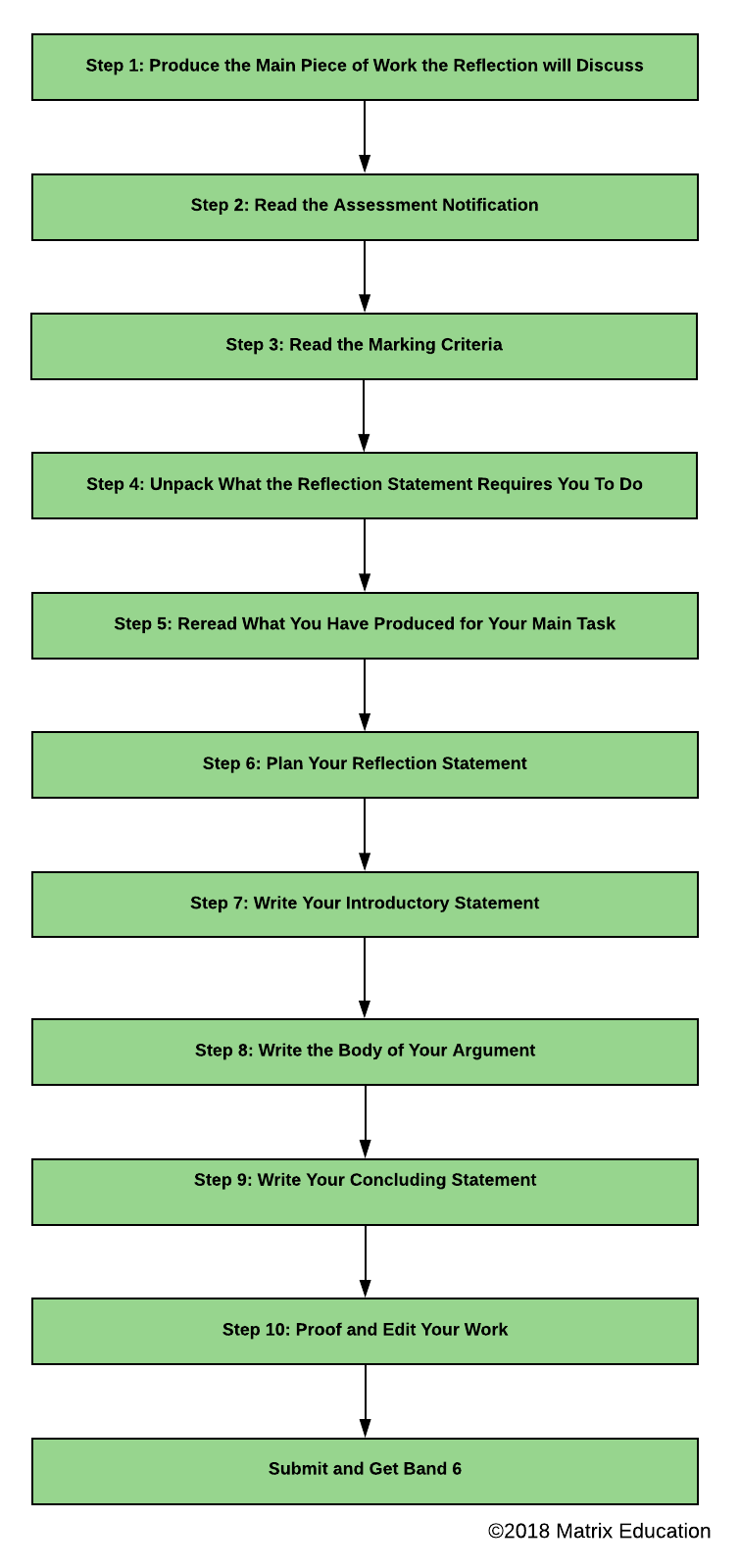
Step 1: Produce the main piece of work for the assessment
Reflection statements are never tasks in and of themselves, they supplement the main task. You will not be able to produce your reflection statement until you have completed and edited your main task.
If you are stuck on your main task and need help, you should read our Beginner’s Guide to Acing HSC English for detailed advice on all aspects of Year 11 and 12 English.
This can be useful. You may well discover that your reflection statement makes you reconsider some of your choices in your main task. In the process of writing your reflection statement, you may decide you need to redraft your main work.
This is one of the key purposes of writing a reflection statement. It forces you to consider what you have produced and the process of producing it. This is a key part of editing and improving your work.
Step 2: Read the assessment notification
Once you’ve produced your main piece of work, you need to revisit your assessment notification. A task that involves a reflection statement will come in two sections:
- Section 1 will be the instructions for the main task;
- Section 2 will be the instructions for the supplementary reflection task.
Rereading the notification is important as it will help you check that you have completed the main task correctly. It will also tell you exactly what you need to do for the second part of the task.
Step 3: Read the marking criteria
For every assessment task that you are given, you MUST be given accompanying marking criteria. Marking criteria are very important. They tell you explicitly what you need to do to get full marks for a specific task.
Reading through the marking criteria at this point serves two purposes:
- You can double check that you have addressed all the criteria for a Band 6 result for your main task.
- You can see what you need to do to achieve a Band 6 result for your reflection statement.
Your reflection statement may have very different requirements for a Band 6 mark than your main task. It is important that you are aware of the differences.
Step 4: Unpack what the reflection statement needs you to discuss for a Band 6 result
Now you’re familiar with the notification and marking criteria for the assessment task, you need to get these understandings down in writing.
To do this, you need to take a few steps:
- Read through the instructions for the task and highlight or underline the keywords (these will usually be the verbs and nouns in the instructions).
- Now you want to write these words down and define them. If you are unsure of a what a word means, that’s okay. Look it up. This is how you expand your vocabulary.
- Next, do the same for the marking criteria. Underline what you feel are the keywords and terms. Again, write them down and define them.
- Now you need to write down what you need to do for a Band 6 result. To do this, write down the instructions in your own words. Include what you need to do for a Band 6 mark in this instruction. Be sure to make note of whether this is meant to be written informally or formally, in the first or third person. You must follow the instruction regarding form for these tasks.
Now you’ve unpacked the question. This means you are now equipped to answer the question you’ve been set.
Next, you need to revisit your main task so you can see what you’ve done and evaluate how you’ve put it together.
Step 5: Reread what you have produced for your main task
Your reflection statement will require you to explain the choices you’ve made in your main composition.
You may not have thought too much about these things when you produced the work. And this is fine. It just doesn’t help you with the reflections statement.
If this is you, you need to read your work with an eye on how you have conveyed information. You must unpack how you have presented your ideas. Essentially, you need to reverse engineer your writing through textual analysis.
Some useful questions to ask yourself when doing this are:
- How does my work address the assessment instructions and marking criteria?
- What am I trying to convey here?
- How does this part of my work address the marking criteria?
- What technique have I used to convey meaning?
- Why have I used that technique?
- Could I have conveyed this idea differently? Would this have been more effective? Why?
Make notes while you do this. You want to be able to refer back to your findings in detail when you write the reflection statement.
Once you’ve finished this, you’re ready to start planning. By now you should have:
- A detailed breakdown of what your task requires you to discuss in your reflection statement and how to discuss it.
- A detailed set of notes about the piece you have produced for the main task.
Step 6: Plan your reflection statement
As with any task, you want to plan things before you get stuck in. Planning your work forces you to consider what information you must include and how you will structure that information in your response. This is an important part of the critical thinking process.
Reflection statements need to have structure, too.
You need to ensure that you introduce your ideas clearly, then expand on them, and, finally, summarise and conclude your statement. Even if you only need to produce a 250-word paragraph, you still need to ensure that it follows the conventions of composition structure. You will lose marks for presenting idea soup.
To plan your response, you’ll need to get your notes on the task and your notes on your response together. Then:
- Read through your notes on the question. Remind yourself what you need to discuss in your reflection statement.
- Write down what you will discuss in your reflection statement.
- Now you need to think about what parts of your main task you will discuss. To do this, refer to your notes about your main task. Ask yourself, “which parts of my task are most relevant to what the task is asking me to discuss?”
- Note down what you think will be the order for presenting your reflection. For example, you may want to start with your structural decisions before discussing your use of techniques or you may want to discuss your influences before discussing your ideas.
Once you’ve got your plan together, you’re ready to write. Matrix students get advice on their assessment tasks from their Matrix Tutors and Teachers. It might be helpful to ask a peer or parent for their thoughts if your school teacher can’t provide advice.
Step 7: Write your introductory statement
The length of your introduction will be contingent on the specifics of your task:
- If your reflection statement is less than 400 words, you will need to produce one or two sentences.
- If you are writing a longer reflection statement of more than 400 words, you will need to write a short introduction.
- If you are producing an Extension 2 reflection statement, this will need to be a longer and more detailed introductory paragraph.
When writing your introduction, you must:
- Introduce the topic you will discuss;
- Explain how this reflects on the work that you are discussing;
- Make reference to the Module you are studying.
Once you have produced your introduction, you are now ready to develop your discussion and discuss the specifics of your main piece of work.
Step 8: Write the body of your argument
Now you’ve introduced your subject matter you need to start presenting an argument. Even though you are reflecting on your own work, you still need to use examples to demonstrate how you’ve set about responding to the main task.
You will need to present several examples to support your argument, but the number of examples will vary depending on the length of the task you’ve been set.
For a shorter reflection, try to present two or three examples and discuss them in detail. If you need to produce several paragraphs, you should be aiming at around four per paragraph.
To do this:
- Introduce the idea you were trying to convey (this might be an influence on your work, a technique you’ve tried to use, or a theme you’ve tried to explore).
- Present an example of this idea.
- Explain how you have attempted to use or explore this idea.
- Explain how this addresses the instructions and marking criteria for the task.
- Explain how this is relevant to the Module you are studying.
- Comment on other choices you could have made and why you didn’t use the other option.
- Repeat this for each example that you need to support your point.
Once you’ve done this, you need to conclude your reflection.
Step 9: Write your concluding statement
Your final statement needs to address the broad idea you have discussed in your response. It will need to be at least two sentences. A longer reflection will require a longer concluding statement; if you had a separate introduction you will require a separate conclusion.
To write your concluding statement:
- Summarise the key ideas that you have discussed.
- Make a statement about what you have taken away from your study of the Module and the process of producing this task and reflecting on it.
Now you need to revise what you’ve written.
Step 10: Proof and edit your work
It is really important that you proof and edit your work before submitting. You don’t want to throw away marks on typos and unnecessary grammatical errors. Proofing your work is something you must do after you finish any task.
To proof your reflection statement:
- Reread your summary of the notification of the task and the marking criteria.
- Read your reflection statement aloud.
- Whenever you encounter a mistake or a sentence that sounds ungrammatical, correct it.
- Pay attention to the logic of your argument. Does it make sense?
- Ask yourself, have I addressed the instructions for the task?
- Ask yourself, have I addressed the marking criteria for a Band 6 response.
- Redraft your reflection statement in its entirety. Don’t submit your first draft. Your second draft will always be better.
If you would like to know more about the editing process, you should read Part 7 of our Beginner’s Guide to Acing HSC English: How to Edit Your Work .
Now you’ve finished a second draft you can submit. If you can, you should try and get some feedback. Matrix students get regular feedback from their Matrix Tutors and Teachers. Feedback on your work allows you to take somebody else’s perspective and use it to improve your marks.

Written by Matrix English Team
© Matrix Education and www.matrix.edu.au, 2023. Unauthorised use and/or duplication of this material without express and written permission from this site’s author and/or owner is strictly prohibited. Excerpts and links may be used, provided that full and clear credit is given to Matrix Education and www.matrix.edu.au with appropriate and specific direction to the original content.
Learning methods available
Boost your Chemistry marks and confidence with structured courses online or on-campus.
Start improving your Physics marks and confidence with structured courses online or on-campus.
Related articles

Year 11 Half Yearly Physics Quiz | Physics Cheatsheet
Use this quick quiz to test your subject area knowledge. Need a cheat sheet for your study? Download our free, foldable Physics Cheatsheet. Follow the links to Module Guide content to strengthen your weaknesses.

Literary Techniques: In Medias Res
In this article, we take the mystery out of in medias res. We explain what it means to start in the middle of things, how it develops meaning, and how to write about it in your responses.
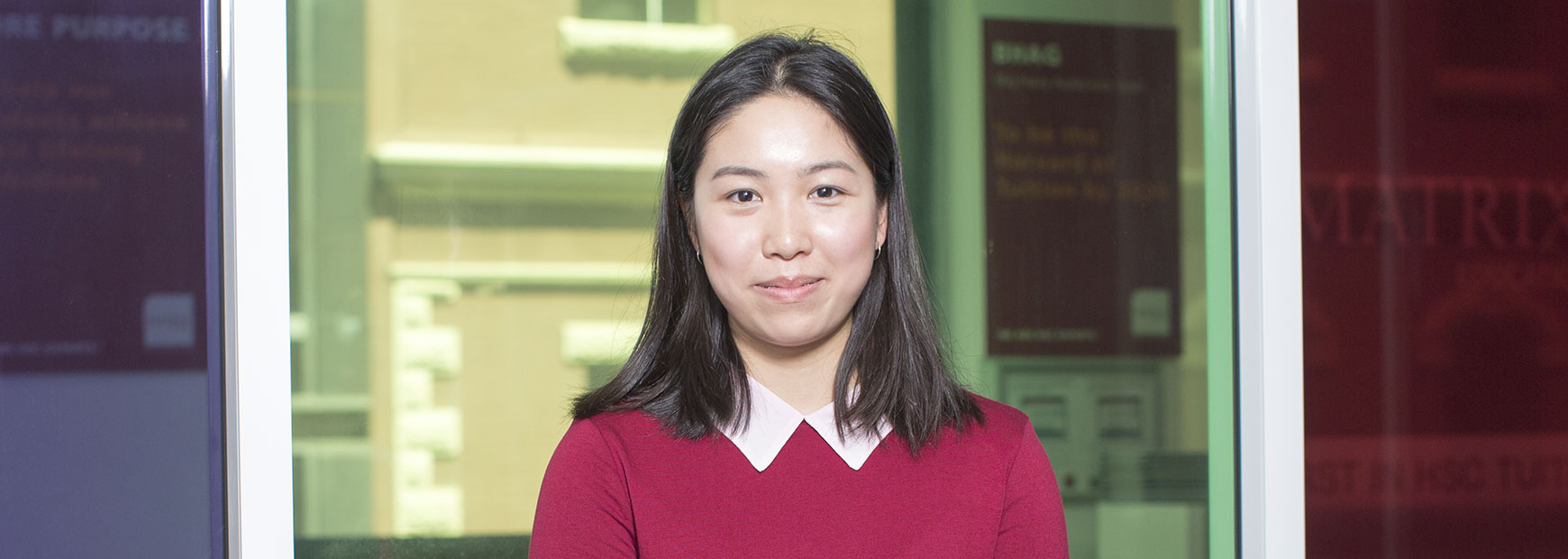
Stephanie’s Hacks: Conquering Self-Doubt and Scoring 99.85
In this post, Stephanie Tam shares the tips that helped her make the HSC All-Rounders and Distinguished Achievers lists.
160 Questions to Ask After a Presentation
Asking questions after a presentation is not just about seeking clarity on what was discussed. It’s a golden opportunity to delve deeper, engage with the speaker, and enhance your understanding of the subject matter. But knowing which questions to ask isn’t always straightforward.
In this piece, we’re about to break down the art of crafting impactful questions post-presentation that will not only benefit you but also add value to the entire audience’s experience.
Table of Contents
Questions to Ask After a Presentation for Feedback
Questions to ask after a presentation interview, questions to ask students after a presentation, questions to ask after a research presentation, questions to ask after a business presentation, questions to ask after a marketing presentation, questions to ask after a book presentation, reflection questions to ask after a presentation, frequently asked questions, final thoughts.
- Can you summarize the key points of the presentation?
- What aspect of the presentation did you find most engaging?
- Were there any areas that were unclear or confusing? If so, what were they?
- How would you rate the overall organization and flow of the presentation?
- Did the visual aids (such as slides or charts) enhance your understanding of the topic? Why or why not?
- Did the presenter maintain good eye contact and use body language effectively?
- Was the presenter’s tone and pace suitable for the content and audience?
- Were there any statistics or facts presented that stood out to you? Why?
- Did the presenter address potential counter-arguments or opposing views adequately?
- Were the objectives of the presentation clearly stated and met?
- How well did the presenter handle questions or interruptions during the presentation?
- Was there anything in the presentation that seemed unnecessary or redundant?
- What would you suggest to improve the presentation for future audiences?
- How did the presentation change or influence your thinking about the subject?
- Did the presentation feel tailored to the audience’s knowledge and interest level?
- Was there a clear and compelling call to action or concluding statement?
- Did the presentation feel too short, too long, or just the right length?
- What was your overall impression of the presenter’s credibility and expertise on the subject?
- How would you rate the relevance and importance of the topic to the audience?
- Can you identify any biases or assumptions in the presentation that may have influenced the message?
- How did you determine what content to include in your presentation?
- Can you explain the rationale behind the structure and flow of your presentation?
- What challenges did you face while preparing this presentation, and how did you overcome them?
- Were there any points in the presentation where you felt you could have elaborated more or less? Why?
- How did you decide on the visual elements and design of your presentation?
- Can you describe your intended audience and how you tailored the content to engage them?
- How did you ensure that the information presented was accurate and up-to-date?
- Were there any counter-arguments or opposing views on this topic that you considered including?
- How would you adapt this presentation for a different audience or context?
- How do you handle unexpected questions or interruptions during a presentation?
- Can you give an example of how you’ve handled negative feedback on a presentation in the past?
- How do you measure the success of a presentation? What metrics or feedback do you seek?
- What techniques do you use to engage an audience that may not be familiar with the topic?
- How do you balance the need to entertain and inform in a presentation?
- How do you prioritize information when you have a limited time to present?
- What strategies do you employ to ensure that your main points are memorable?
- How do you deal with nerves or anxiety before or during a presentation?
- Can you describe a situation where a presentation did not go as planned and how you handled it?
- How do you keep up with the latest trends and best practices in presenting?
- Is there anything you would change about this presentation if you were to do it again?
- How did you feel about the presentation? Were you confident or nervous, and why?
- What was the main message or goal of your presentation, and do you think you achieved it?
- How did you decide on the structure of your presentation?
- What research methods did you use to gather information for this presentation?
- Were there any challenges you encountered while preparing or presenting, and how did you address them?
- How did you ensure that your visual aids or multimedia elements supported your key points?
- What part of the presentation are you most proud of, and why?
- Were there any areas where you felt uncertain or that you would like to improve upon for next time?
- How did you tailor your presentation to fit the knowledge level and interest of your audience?
- What techniques did you use to engage the audience, and how do you think they worked?
- How did you practice your presentation, and what adjustments did you make as a result?
- Did you feel the time allotted for your presentation was sufficient? Why or why not?
- How did you decide what to emphasize or de-emphasize in your presentation?
- What feedback did you receive from peers during the preparation, and how did you incorporate it?
- Did you have a clear conclusion or call to action, and why did you choose it?
- How do you think your presentation style affects the way your audience receives your message?
- What would you do differently if you were to present this topic again?
- Can you reflect on a piece of feedback or a question from the audience that made you think?
- How has this presentation helped you better understand the subject matter?
- How will the skills and insights gained from this presentation experience benefit you in the future?
- Can you elaborate on the research question and what prompted you to investigate this topic?
- How did you choose the methodology for this research, and why was it the most suitable approach?
- Can you discuss any limitations or constraints within your research design and how they might have affected the results?
- How do your findings align or contrast with existing literature or previous research in this field?
- Were there any unexpected findings, and if so, how do you interpret them?
- How did you ensure the reliability and validity of your data?
- Can you discuss the ethical considerations involved in your research, and how were they addressed?
- What are the practical implications of your findings for practitioners in the field?
- How might your research contribute to theoretical development within this discipline?
- What recommendations do you have for future research based on your findings?
- Can you provide more details about your sample size and selection process?
- How did you handle missing or inconsistent data within your research?
- Were there any biases that could have influenced the results, and how were they mitigated?
- How do you plan to disseminate these findings within the academic community or to the broader public?
- Can you discuss the significance of your research within a broader social, economic, or cultural context?
- What feedback have you received from peers or advisors on this research, and how has it shaped your work?
- How does your research fit into your long-term academic or professional goals?
- Were there any particular challenges in conveying complex research findings to a general audience, and how did you address them?
- How does this research presentation fit into the larger project or research agenda, if applicable?
- Can you provide more insight into the interdisciplinary aspects of your research, if any, and how they contributed to the depth or breadth of understanding?
- Can you elaborate on the primary objectives and expected outcomes of this business initiative?
- How does this strategy align with the overall mission and vision of the company?
- What are the key performance indicators (KPIs) that you’ll be monitoring to gauge success?
- Can you discuss the risks associated with this plan, and how have you prepared to mitigate them?
- How does this proposal fit within the current market landscape, and what sets it apart from competitors?
- What are the potential financial implications of this plan, including both investments and projected returns?
- Can you provide more detail about the timeline and milestones for implementation?
- What internal and external resources will be required, and how have you planned to allocate them?
- How did you gather and analyze the data presented, and how does it support your conclusions?
- How does this proposal take into account regulatory compliance and ethical considerations?
- What are the potential challenges or roadblocks, and what strategies are in place to overcome them?
- Can you explain how this initiative aligns with or affects other ongoing projects or departments within the company?
- How will this plan impact stakeholders, and how have their interests and concerns been addressed?
- What contingency plans are in place if the initial strategy doesn’t achieve the desired results?
- How will success be communicated and celebrated within the organization?
- What opportunities for collaboration or partnership with other organizations exist within this plan?
- How does this proposal consider sustainability and the potential long-term impact on the environment and community?
- How have you incorporated feedback or lessons learned from previous similar initiatives?
- What are the key takeaways you’d like us to remember from this presentation?
- How can we get involved or support this initiative moving forward?
- Can you elaborate on the target audience for this marketing campaign, and how were they identified?
- What are the main objectives and key performance indicators (KPIs) for this campaign?
- How does this marketing strategy align with the overall brand values and business goals?
- What channels will be utilized, and why were they chosen for this particular campaign?
- Can you discuss the expected return on investment (ROI) and how it will be measured?
- What are the creative concepts driving this campaign, and how do they resonate with the target audience?
- How does this campaign consider the competitive landscape, and what sets it apart from competitors’ efforts?
- What are the potential risks or challenges with this marketing plan, and how will they be mitigated?
- Can you provide more details about the budget allocation across different marketing channels and activities?
- How have customer insights or feedback been integrated into the campaign strategy?
- What contingency plans are in place if certain elements of the campaign do not perform as expected?
- How will this marketing initiative be integrated with other departments or business functions, such as sales or customer service?
- How does this campaign consider sustainability or social responsibility, if at all?
- What tools or technologies will be used to execute and monitor this campaign?
- Can you discuss the timeline and key milestones for the launch and ongoing management of the campaign?
- How will the success of this campaign be communicated both internally and externally?
- How does this marketing strategy consider potential regulatory or compliance issues?
- How will the campaign be adapted or customized for different markets or segments, if applicable?
- What lessons from previous campaigns were applied in the development of this strategy?
- How can we, as a team or as individuals, support the successful implementation of this marketing plan?
- What inspired the main theme or concept of the book?
- Can you describe the intended audience for this book, and why they would find it appealing?
- How did the characters’ development contribute to the overall message of the book?
- What research was conducted (if any) to ensure the authenticity of the setting, characters, or events?
- Were there any challenges or ethical considerations in writing or presenting this book?
- How does this book fit into the current literary landscape or genre? What sets it apart?
- What do you believe readers will find most engaging or thought-provoking about this book?
- Can you discuss any symbolic elements or literary devices used in the book and their significance?
- How does the book’s structure (e.g., point of view, chronological order) contribute to its impact?
- What were the emotional highs and lows during the writing or reading of this book, and how do they reflect in the story?
- How does the book address or reflect contemporary social, cultural, or political issues?
- Were there any parts of the book that were particularly difficult or rewarding to write or read?
- How does this book relate to the author’s previous works or the evolution of their writing style?
- What feedback or responses have been received from readers, critics, or peers, and how have they influenced the presentation?
- What are the main takeaways or lessons you hope readers will gain from this book?
- How might this book be used in educational settings, and what age group or courses would it be suitable for?
- Can you discuss the process of editing, publishing, or marketing the book, if applicable?
- How does the book’s cover art or design reflect its content or attract its target readership?
- Are there plans for a sequel, adaptation, or related works in the future?
- How can readers stay engaged with the author or the book’s community, such as through social media, book clubs, or events?
- How do you feel the presentation went overall, and why?
- What part of the presentation are you most proud of, and what made it successful?
- Were there any moments where you felt challenged or uncertain? How did you handle those moments?
- How did you perceive the audience’s engagement and reaction? Were there any surprises?
- What feedback have you received from others, and how does it align with your self-assessment?
- Were there any technical difficulties or unexpected obstacles, and how were they addressed?
- How well did you manage your time during the presentation? Were there areas that needed more or less focus?
- How did you feel before the presentation, and how did those feelings change throughout?
- What strategies did you use to connect with the audience, and how effective were they?
- Were there any points that you felt were misunderstood or could have been communicated more clearly?
- How did the preparation process contribute to the overall success or challenges of the presentation?
- What did you learn about yourself as a communicator or presenter through this experience?
- Were there any ethical considerations in the content or delivery of the presentation, and how were they handled?
- How does this presentation align with your long-term goals or professional development?
- How would you approach this presentation differently if you had to do it again?
- How has this presentation affected your confidence or skills in public speaking or presenting?
- What resources or support would have enhanced your preparation or performance?
- How will you apply what you’ve learned from this presentation to future projects or presentations?
- How did your understanding of the topic change or deepen through the process of preparing and presenting?
- What steps will you take to continue improving or building on the skills demonstrated in this presentation?
What if I disagree with a point made during the presentation?
It’s important to frame disagreement in a constructive and respectful way. You might say, “ I found your point on X intriguing. From a different perspective, could Y also be considered…? ” This opens up a dialogue without dismissing the presenter’s viewpoint.
How can I formulate my questions to encourage a more detailed answer?
Use open-ended questions that start with “ how ,” “ why, ” or “ could you explain… ” as these require more than a yes or no answer and encourage the presenter to provide depth. For example, “ Could you explain the process behind your research findings in more detail? “
By asking insightful questions, you’re not only cementing your understanding of the material presented but also opening doors to further knowledge and collaboration. Remember, the quality of your questions reflects the depth of your engagement and willingness to learn.
So, the next time you find yourself in the audience, seize the opportunity to ask meaningful questions and watch as simple presentations transform into dialogues that inspire and illuminate.
How useful was this post?
Click on a star to rate it!
As you found this post useful...
Share it on social media!
We are sorry that this post was not useful for you!
Let us improve this post!
Tell us how we can improve this post?

Bea Mariel Saulo
Bea is an editor and writer with a passion for literature and self-improvement. Her ability to combine these two interests enables her to write informative and thought-provoking articles that positively impact society. She enjoys reading stories and listening to music in her spare time.
- Trivia Quizzes
- Memory Games
- Spot the Differences
- Sliding Puzzles
13 Self Reflection Worksheets & Templates to Use in Therapy

While valuable for clients and students, it is equally vital for therapists, coaches, and mental health professionals.
Literature across multiple disciplines confirms that reflection serves therapists by improving “learning and performance in essential competencies” (Aronson, 2011, p. 200). In therapy, it helps the client “manage personal feelings, such as anxiety and inadequacy, and their impact on others” (Fisher, Chew, & Leow, 2015, p. 736).
This article introduces the basics behind reflection along with questions and worksheets that encourage and support the reflective process and maximize the benefits for therapists, clients, and students.
Before you continue, you might like to download our three Meaning and Valued Living Exercises for free . These creative, science-based exercises will help you learn more about your values, motivations, and goals and will give you the tools to inspire a sense of meaning in the lives of your clients, students, or employees.
This Article Contains:
Fostering reflection skills: the basics, 50+ questions to ask your clients or students, 5 helpful reflection worksheets & tools, journaling & diaries: 2 useful templates, top 3 activities for practicing reflection, 3 fun games to inspire clients, positivepsychology.com’s reflection resources, a take-home message.
While reflection has no single, universal definition, Aronson (2011, p. 200) frames it as the “process of analyzing, questioning, and reframing an experience in order to make an assessment of it for the purposes of learning (reflective learning) and/or improve practice (reflective practice).” It has multiple uses in various contexts.
Reflection is central to most therapies. Indeed, Socratic questioning (using open yet focused questions) is widely used in Cognitive-Behavioral Therapy (CBT) to encourage reflection and unpack deeply held beliefs (Bennett-Levy, Thwaites, Chaddock, & Davis, 2009).
Within therapy , Bennett-Levy et al. (2009) recognized that reflection can be beneficial for both the therapist and the client, and can be considered from several perspectives.
- Reflective practices Reflection as part of the clinical experience, using journals, video, and group activities.
- Reflective skills The ability to reflect on oneself through therapeutic interaction and self-awareness of feelings and thoughts.
- Reflective systems Reflection results from the interaction of several processes, including the individual’s memory, skills, and reflective system.
- Reflective processes Reflection involves the ability to observe (possibly via visualization) and then reflect or conceptualize to engage in further processing, including elaboration, problem solving, and self-questioning.
Bennett-Levy et al. (2009, p. 121) offer the following helpful definition of reflection:
“Reflection is the process of intentionally focusing one’s attention on a particular content; observing and clarifying this focus; and using other knowledge and cognitive processes (such as self-questioning, logical analysis and problem-solving) to make meaningful links.”
The benefits of reflection carry across to the learning process found within educational environments. It forms the second of the following four-stage model used by coaches engaging with students to understand the learning process (Adams, 2016):
- Attending to and focusing on the relevant features of their experience
- Actively reflecting on their experience
- Extracting learning from that experience
- Planning how to create new ways of behaving in response to the learning
Reflection and learning are also highly applicable outside of school.
While reflection is vital to self-awareness and healing for clients, it is also a powerful and insightful tool for therapists.
Mental health professionals must be self-aware and cognizant of the skills they are using, because “in no other profession does the personality and behavior of the professional make such difference as it does in counseling” (Meier & Davis, 1997).
The following questions can be helpful for new and existing counselors and their clients to increase self-awareness and knowledge of counseling techniques (modified from Bennett-Levy et al., 2009):
- Observe the experience (such as the session or intervention). How did I feel? What did I notice?
- Clarify the experience. What did I learn? Was it helpful? What did not change?
The following two points are more applicable for therapists:
- Implications of the experience for clinical practice What are the implications for and impacts on one-to-one therapy, supervision, consultation, etc.?
- Implications of the experience for how I see myself as a therapist What are the implications of this experience for my understanding of cognitive therapy and theory?
Considering each question in turn can provide insights that encourage greater knowledge of the therapeutic process and promote lessons to take forward to future sessions.

Asking appropriate questions is a crucial aspect of reflection and central to deeper, long-lasting learning (Aronson, 2011; Adams, 2016).
Reflection questions for students
The following three sets of questions promote reflection in students by considering academic performance (modified from ones used by the Colorado Department of Education ):
Reflective Questions for personal academic performance
These Reflective Questions prompt the student to think about what they are learning, why they are learning, and how they can improve the overall process.
The student answers the first question regarding what they have been learning and then selects a sample of other questions to prompt reflection.
They then complete the last column with their thoughts for later review by themselves or a therapist, coach, or counselor.
A sample of the questions includes:
What have you been learning about (today, this week, or this semester)? Why do you think these objectives and this subject are important? Did you give your best effort on your most recent assignment?
Reflective Metacognition Questions for students
Reflective Metacognition Questions help students reflect on how and what they think .
The questions are grouped under the following subsections and can be answered individually, in pairs, or as a group exercise, with a summary of the answers placed in the final column.
- Reflection and collaboration
- Self-reflection
Example questions include:
What are your thoughts about what was said? Are there any other similar answers or alternative answers? Why do you think this answer is true?
Reflection Questions in Therapy
Reflection is an essential part of therapy.
Using the Reflective Questions in Therapy worksheet, the therapist can encourage and facilitate the process of reflection in the client, such as (Bennett-Levy et al., 2009):
What do I wish people better understood about me? What behaviors and beliefs do I want to let go of? Have I been receiving enough support this year?
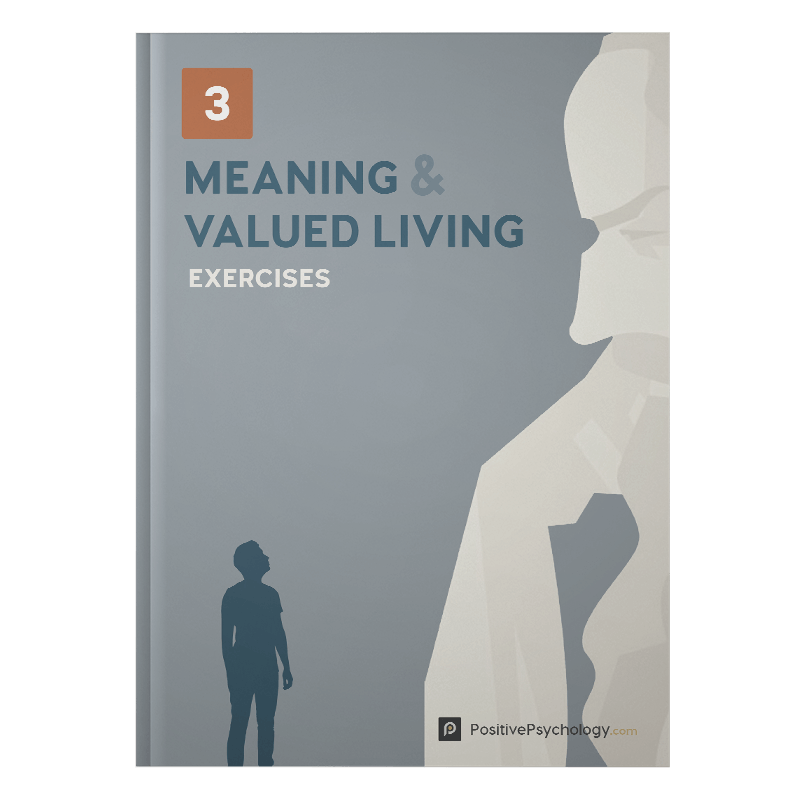
Download 3 Meaning & Valued Living Exercises (PDF)
These detailed, science-based exercises will equip you or your clients with tools to find meaning in life help and pursue directions that are in alignment with values.
Download 3 Free Meaning Tools Pack (PDF)
By filling out your name and email address below.
During CBT and other therapies, the client is often given a workbook or journal to capture reflections on the practice or skills they develop as they progress through treatment.
Reflection reinforces learning within the sessions and, more importantly, leads to deeper insights between sessions (Bennett-Levy et al., 2009).
Learning From My Past
The Reflections on Learning From My Past worksheet helps the client capture and reflect on an event from their past and consider how different behavior may have led to an alternate outcome.
The client is asked a series of questions about the incident, such as:
What happened or what was the event? How did it make you feel? How did you handle it?
Self-Reflection Behavior Review
At the end of the year or looking back on the client’s life, it can help to look for patterns in behavior.
The Self-Reflection Behavior Review worksheet is a valuable way to summarize events and see the recurring traps into which the client falls.
The summary provides a valuable talking point during therapy sessions and can be referred to later in order to assess how behavior has changed and improved.
It asks the client to consider:
Do you see a pattern in your behavior? How could you act differently in the future? What situations should you try to avoid?
Who Am I Self-Reflection
In life, we are often so busy with everyday tasks that we forget to take stock of who we are, what we are good at, and what is important to us.
Clients or students can use the Who Am I Self-Reflection worksheet to think about what they are good at, what significant challenges they have been confronted with, and what inspires them.
Some questions to consider include:
Think of something significant that went wrong. What did I learn from it? What am I passionate about? What do I love most about myself?

World’s Largest Positive Psychology Resource
The Positive Psychology Toolkit© is a groundbreaking practitioner resource containing over 500 science-based exercises , activities, interventions, questionnaires, and assessments created by experts using the latest positive psychology research.
Updated monthly. 100% Science-based.
“The best positive psychology resource out there!” — Emiliya Zhivotovskaya , Flourishing Center CEO
Student Work Reflection
Students can help their existing and future learning by thinking about how they are approaching their work and using metacognitive skills to drive future improvements (Adams, 2016).
The Student Work Reflection is a set of simple repeating questions to consider how they approach each task in school.
It asks the student to consider:
How could I improve? What am I still working on? What am I most proud of?
Reflection on Group Activities
Reflection is equally important in group tasks as in individual tasks. The Reflection on Group Activities is for an educational or therapy setting to assess the success and learnings from a group activity.
Working individually or in groups, students can answer questions such as:
What went well? What did not go well? What could we try next time?

As an intervention, it is a creative way to engage clients in a therapeutic activity, increasing self-awareness and personal growth.
It can be helpful to capture some of the key events of the day. The act of writing what happened and reviewing it later can be insightful and help you recognize positive and negative patterns in your behavior.
Daily Reflection of Feelings
Use the Daily Reflection of Feelings journal with the client to record how their day went and capture the feelings they experienced.
Questions include:
What was the best part of the day? What would you change about the day if you could? What are you looking forward to tomorrow?
Daily Reflection of Behavior
Clients and therapists can benefit from reviewing significant events that occurred between sessions.
Use the Daily Reflection of Behavior journal with clients to capture daily behaviors that were unexpected or parts of habits that the client wishes to change.
What happened? How did I behave? Why did it happen?

How to start a creative journal – Johanna Clough
Several techniques can encourage the process of reflection in clients and students.
- DARN The DARN acronym forms an important aspect of motivational interviewing . With the use of evocative change questions, the client is invited to engage in reflection to consider the change, including:
Desire questions – What I would like, wish, or want to do? Ability questions – Capturing the idea that change is possible. Reasons questions – Recognizing the reasons for change. Need questions – Identifying the urgency of the change.
- OARS OARS is another acronym important to the process of motivational interviewing to elicit change talk through the use of the following:
Open questions encourage the client to talk. Affirmations include statements of understanding and offers of support. Reflections capture and rephrase what the client has said Summarizing provides a check-in with the client by summarizing what has been said.
OARS encourages reflection in both the therapist and the client.
- Socratic questioning Observing and taking part in Socratic questioning can be a valuable opportunity to learn about the process of encouraging reflection in others and in oneself.
Consider the five questions:
What happened? When did it happen? Where did it happen? Why did it happen? How did it happen?

Try out the following three activities with clients or students.
Your life as a play
You can carry out this reflective exercise in small groups of three or four people.
Ask each person to describe their ideal life in three acts, as though it were a play.
What past dreams were achieved? What is the present (good and bad)? What is your ideal future?
Share with the group, discussing each of the acts, adding humorous insights along the way. End with your positive view of how the future might look.
Shield of honor
This activity is ideal for reflection in multiple small groups.
Ask each group to create a shield out of a large piece of paper.
Divide the paper into four equal rectangles, representing:
- Skills and abilities they offer
- Skills and abilities they need to improve
- Frustrations
- What they are proud of
Tell the group they are only allowed to use drawings and pictures – no words.
After 20 minutes, ask each group to share what they have created.
Reflection on communication
Individuals are grouped into pairs and asked to sit back-to-back.
One person is given either a pen and paper or building blocks and asked to create a novel design.
Ask them to describe what it looks like, while the other person attempts to recreate the design on their side.
Once finished, the two can compare what they have created and discuss the communication process.
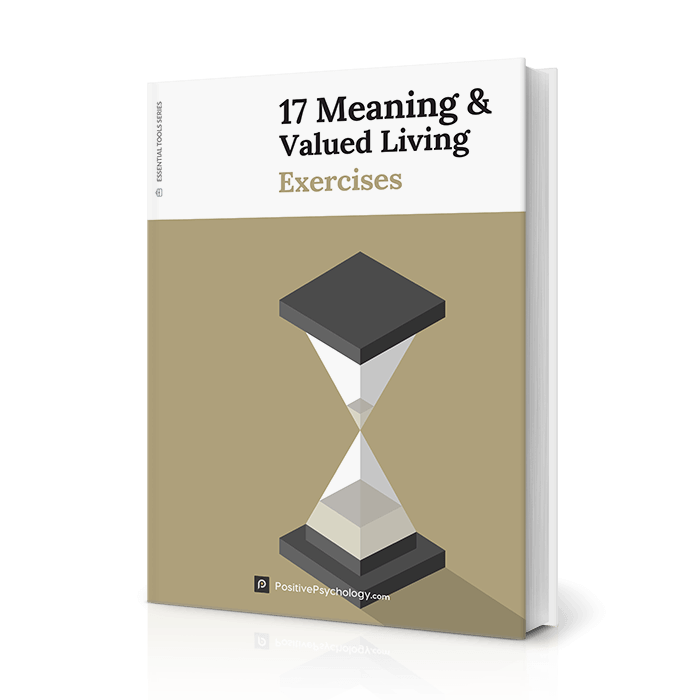
17 Tools To Encourage Meaningful, Value-Aligned Living
This 17 Meaning & Valued Living Exercises [PDF] pack contains our best exercises for helping others discover their purpose and live more fulfilling, value-aligned lives.
Created by Experts. 100% Science-based.
Throughout this post, we’ve discussed the importance of clarifying wants, behavior patterns, and forces of motivation to better understand what brings meaning throughout one’s life. To this end, we invite you to check out our free Meaning & Valued Living Exercises Pack .
This pack features three of our top tools from the Positive Psychology Toolkit©, all of which center on the theme of values-based living:
- The Top 5 Values This exercise draws on key principles of Acceptance and Commitment Therapy to help clients begin brainstorming their values. Following this, clients will then prioritize these values in a list to identify those most central to who they are.
- Self-Eulogy This exercise invites clients to consider how they’d like to be remembered at their funeral as a means to identify and clarify values. Based on this, they can then consider how well they are living in alignment with these values.
- The Scoreboard Metaphor This exercise helps clients recognize how to enact their values through goal-setting. In particular, it draws on the metaphor of a basketball game to illustrate how living into one’s values is an ongoing process and that the paths by which we pursue our goals are opportunities to enact our values in daily life.
You can access all three exercises for free by downloading our Meaning & Valued Living Exercises Pack .
Additionally, if you’re looking for further reading on the topic of self-reflection, be sure to check out our blog post featuring ten book recommendations .
If you’re looking for more science-based ways to help others discover meaning, this collection contains 17 validated meaning tools for practitioners. Use them to help others choose directions for their lives in alignment with what is truly important to them.
Reflection engages clients and students in the process of analyzing, questioning, and reframing an experience. It encourages individuals or groups to learn and improve, and promotes deeper, longer lasting learning (Aronson, 2011).
Within therapy and coaching, reflection can help individuals manage their feelings (such as anxiety or self-doubt) and recognize how their behavior affects others (Fisher et al., 2015).
In an educational setting, research shows that questions and exercises prompt learners to improve core competencies (Aronson, 2011).
In any environment, reflection involves metacognition. Individuals must step outside of their existing cognition to think about their thinking . It is a skill that is best learned through practice.
Therapists, coaches, counselors, and teachers can help by prompting the client or class to consider what they have learned, what has gone well (and hasn’t), and what they could have done differently.
The takeaways from reflection can change a person’s view of what has already happened and influence how they behave in the future.
The exercises and questions within this article will engage others, promoting the reflective process and offering deeper understanding and tools for future learning.
We hope you enjoyed reading this article. Don’t forget to download our three Meaning and Valued Living Exercises for free .
- Adams, M. (2016). Coaching psychology in schools: Enhancing performance, development and wellbeing . Routledge.
- Aronson, L. (2011). Twelve tips for teaching reflection at all levels of medical education. Medical Teacher , 33 (3), 200–205.
- Bennett-Levy, J., Thwaites, R., Chaddock, A., & Davis, M. (2009). Reflective practice in cognitive behavioural therapy: The engine of lifelong learning. In J. Stedmon & R. Dallos (Eds.), Reflective practice in psychotherapy and counselling (pp. 115–35). Open University Press.
- Fisher, P., Chew, K., & Leow, Y. J. (2015). Clinical psychologists’ use of reflection and reflective practice within clinical work. Reflective Practice , 16 (6), 731–743.
- Hayman, B., Wilkes, L., & Jackson, D. (2012). Journaling: Identification of challenges and reflection on strategies. Nurse Researcher , 19 (3), 27–31.
- Meier, S., & Davis, S. (1997). The Elements of Counselling . Brooks/Cole.
Share this article:
Article feedback
What our readers think.
Thank you for this amazing article. Very useful and informative. Heartfelt gratitude for sharing such wonderful information. Your touching and empowering many lives silently. Thank you
Let us know your thoughts Cancel reply
Your email address will not be published.
Save my name, email, and website in this browser for the next time I comment.
Related articles

Urge Surfing: How Riding the Wave Breaks Bad Habits
We all experience cravings, sometimes daily. For some, it might be chocolate, caffeine, or social connection, while for others, it can be more serious, including [...]

Reparenting: Seeking Healing for Your Inner Child
In our work as therapists, we often encounter the undeniable truth: we never truly outgrow our inner child. A youthful part within us persists, sometimes [...]

30 Best Self-Exploration Questions, Journal Prompts, & Tools
Life is constantly in flux – our environment and ‘self’ change continually. Self-exploration helps us make sense of who we are, where we are, and [...]
Read other articles by their category
- Body & Brain (52)
- Coaching & Application (39)
- Compassion (23)
- Counseling (40)
- Emotional Intelligence (21)
- Gratitude (18)
- Grief & Bereavement (18)
- Happiness & SWB (40)
- Meaning & Values (26)
- Meditation (16)
- Mindfulness (40)
- Motivation & Goals (41)
- Optimism & Mindset (29)
- Positive CBT (28)
- Positive Communication (23)
- Positive Education (36)
- Positive Emotions (32)
- Positive Leadership (16)
- Positive Parenting (14)
- Positive Psychology (21)
- Positive Workplace (35)
- Productivity (16)
- Relationships (46)
- Resilience & Coping (38)
- Self Awareness (20)
- Self Esteem (37)
- Strengths & Virtues (29)
- Stress & Burnout Prevention (33)
- Theory & Books (42)
- Therapy Exercises (37)
- Types of Therapy (54)
21 Great Reflection Questions That Add Depth to Student Learning

Have you ever told someone, “don’t look back”?
Odds are you have, and that it was a much-needed reminder to someone expressing regret or frustration with their past. You encouraged them to dust themselves off and keep on keepin’ on. Why? Because they’re capable and they’ve got this!
But is it always bad to look back? Definitely not! There’s a special kind of looking back that can be powerfully good at informing what we do in the future. And that’s called reflection.
“Life can only be understood backwards; but it must be lived forwards.” —Sorin Kierkegaard
As student affairs professionals aiming to support student growth, reflection should be one piece of the pie! Reflection is also an awesome tool for boosting the effectiveness of on-campus programming efforts. We see institutions doing this already, especially in connection to co-curricular pathways and targeted initiatives.
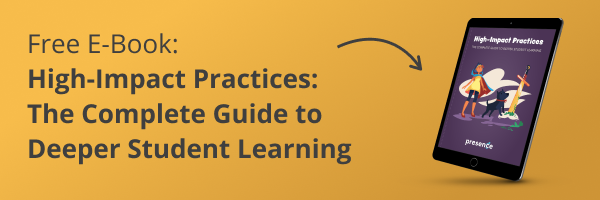
When we reflect, we take a close look at the effort we’ve put in, what we’ve experienced, and what we’ve gotten out of what we’ve done.
This may sound like a simple or subconscious part of moving around in the world, but the point of reflection is that it is intentional. It only takes a few minutes of looking back and focusing on the experience to get insights that will guide us as we move forward!
The information we get out of the reflection process tells us what we can do in the future to improve our results. We can identify some areas of improvement and sharpen our goals to better situate us so we can achieve what it is we want . This process is one that will result in a noticeable change in the development of ourselves, our work, and our processes.
Why You Should Reflect
Reflections do a lot! Like a debrief, they give us a sense of completion and satisfaction. They can also work as a self-evaluation wherein they create space for students to communicate personal and professional areas where they want to see growth, all while they assess how they’re working toward these.
Even if you utilize reflections already, it’s important to…reflect…on the questions you’re using to encourage reflection — a meta-reflection of sorts!
What good are you trying to do? What good are students getting? What good could they be getting? Choosing questions that are impactful is key, and if you’re looking to critically examine the programs and services you’re providing to students, look no further!
Knowing what questions to ask can be a difficult beast because we want the reflection experience to be as meaningful as possible for students to engage with.
No matter what the program that’s being reflected on, we recommend that your questions be simple, open, and practical.
- Simple questions rewrite the narrative that reflection has to be “deep” and ensure that the barriers and stakes are both low for students to get started. (Not to mention this also makes maintenance easy for administrators.)
- Open questions honor students’ experiences and encourage them to engage in ways that are most meaningful to them. This acknowledges the importance of agency and the ways that different experiences may be interpreted differently by different people and contexts.
- Practical questions apply straightforwardly to students’ lives outside the classroom. This gives them a chance to develop their critical thinking skills and base of knowledge far beyond the academic venue.
It’s no secret that the content of these reflections can impact more than just students; for instance, their responses may steer the future of program tracks at your campus. Plus, you get to see what students are getting out of the programs already in place, which can spark ideas for how things might be adjusted to better achieve the program’s and student members’ goals.
This, of course, connects to the larger vision and future of the institution. When working to drive engagement, collecting responses from students allows student affairs professionals to track student learning while showing the institution’s efficacy. That’s critical for the process of securing funding and, increasingly, for accreditation!
21 Reflection Prompts
Here at Presence, there are five main prompts that we encourage you to use. These are set as the default questions in our software when you start customizing your reflection form. They’re simple, broad, and practical.
These questions go deeper and deeper as they go on, similar to the way Bloom’s Taxonomy works. We’ve included some other questions which are variations of the core ones, targeting specific aspects which might cater better to certain programs and purposes.
Q1. Describe your experience.
Asking students to describe their experience sounds simple and unhelpful, but externalizing these experiences by putting it into words so that it can be shared is transformative. That’s because there are a lot of things we don’t realize we think until we’re asked to share those thoughts. Doing this here encourages us to be more mindful and aware of what we’re up to and how we’re spending our time.
Here are some similar questions:
- What strengths or beliefs did you share?
- Did anything unexpected happen?
- How did you respond to challenges?
Encouraging the student to describe how they interacted and communicated with others boosts their self-awareness and encourages them to dig deeper, helping them recognize how they may have been perceived by others as well.
Q2. What did you like about the experience?
Asking students what they liked about the program gives them space to analyze the experience they just described but in an exclusively positive way. They get to identify for themselves what they enjoyed, which is an awesome approach to take when thinking constructively about making something better. This helps students sharpen their critical eye and strengthen their voice.
- Who did you build a positive relationship with?
- What were you drawn to?
- What might you want to learn more about because of this?
- What was the most enjoyable moment?
Identifying positive bits about what we’re doing (like what was special about it) increases our satisfaction in and appreciation of what we do while still keeping an eye towards improvement.
Q3. What did you learn?
Asking students what they learned encourages them to decide what the effect of their participation was on themselves personally, beyond any of our stated outcomes. They get to distinguish what they knew before from what they know now. We recognize that reflecting on learning outside of a purely academic context may seem strange to students, but these questions inspire self-development.
- What were your most interesting discoveries?
- What did you realize about yourself?
- Did this give you a new perspective, challenge your point of view, or introduce you to new techniques, skills, processes?
Learning something particular to the program’s subject matter or something related to a problem they’re facing allows direct reflection on the ways that they might have learned something that connects to them more personally.
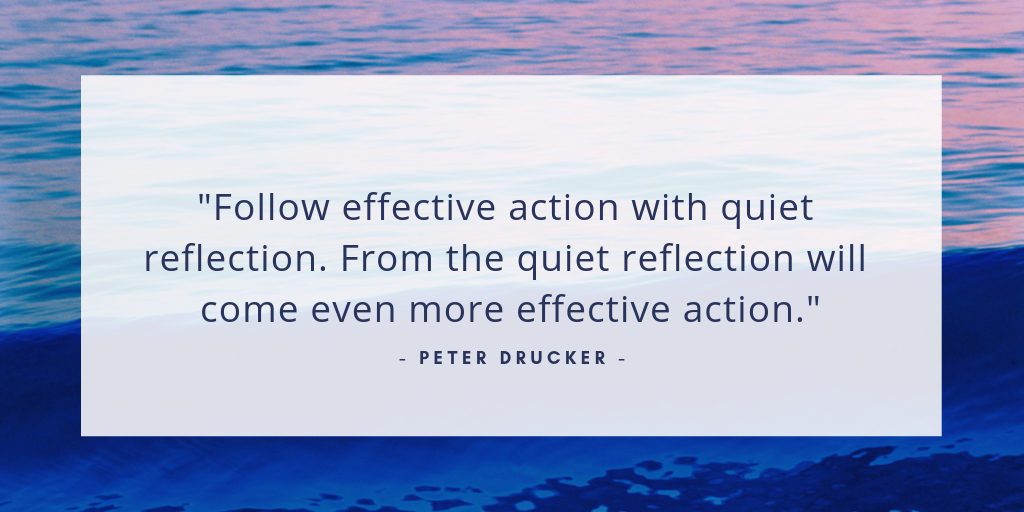
Q4. Why does it matter?
Asking why this experience matters encourages students to think futuristically and recognize that the learning they’re doing is real and applicable. Reflecting on the significance of their involvement gives meaning and purpose to what they do and encourages them to keep doing more of it.
- Does this connect to any past experiences or themes? If so, which?
- Were there areas of risk?
- What does what I learned connect to?
Students get a chance to connect this experience to the bigger picture of their involvement on campus and their development as a person during their college years. Pointing out healthy risks (opportunities to step outside of our comfort zones) inspires us to grow new skills. We also get to grow by connecting our experiences over time (past, present, and future) together.
Q5. How would you apply what you learned in school? With friends? With family? In the community? In your career?
Thinking through concrete ways to apply these new skills to certain situations regularly is another helpful way to extend the student beyond their current setting and consider how they can apply what they’ve learned.
- What did you learn about yourself?
- H ow did your involvement and participation in this fit into your broader goals for developing yourself?
- What would you change?
Thinking explicitly about the other domains of our lives and how we can actively work to improve those is what this gets at. Students get to realize the real-life applicability of what they’re doing and can feel like they’re making progress in all areas of life!
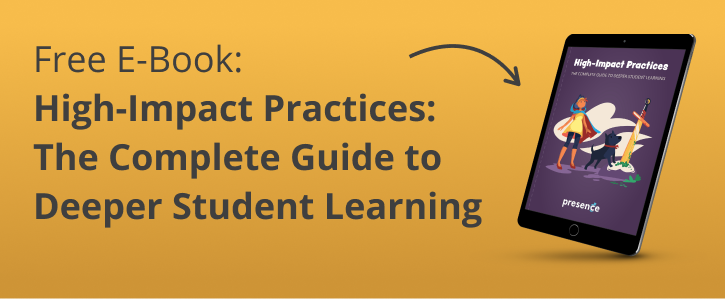
Once you begin to use some of these questions, let us know how they’re working for you by tweeting @themoderncampus !
And PS: A campus engagement tool ( like Presence! ) can make the creation and management of reflections simple and convenient thanks to the power of automation and conditional logic .

About the author: Sara Friend (she/her) is a former Content Marketing Intern at Modern Campus Presence and a graduate of the New College of Florida. She loved being an RA to first-year-in-college students. She's now a Mentor Manager for Big Brothers Big Sisters of the Sun Coast. Learn how we can help get your students involved .
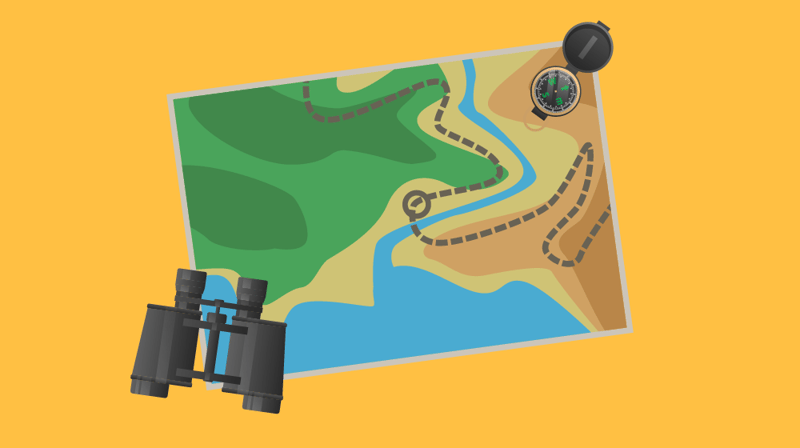
- Rating Count
- Price (Ascending)
- Price (Descending)
- Most Recent
Classroom presentation reflection form
Resource type.
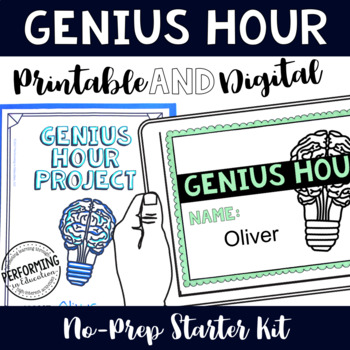
Genius Hour Printable & Google Classroom 3rd-6th | Full Resource

EDITABLE Pubic Speaking Oral Presentation Reflection form Survey Rubric digital

Social Emotional SEL Classroom Meetings Morning Meetings FULL YEAR

Parent Teacher Conferences Forms Editable Reminder | Sign Up Sheet | Digital

Parent Teacher Conferences Slides | Digital Self- Reflection Form

SMART Goals Form & Reflection (Google Slides)

Student Self Reflection Assessment -Student Self Evaluation Forms

Asymmetrical Balance Sculpture Art Lesson Plan, Presentation , Video + Rubric

Back to School Class Rules, Illustrated Social Stories, Student Reflection Forms

Student Led Conferences Templates Editable Forms Digital Portfolio
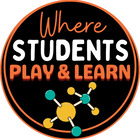
EDITABLE Career Day Student JOURNAL REFLECTION Form

Behavior Buddy Reflection Forms | With Rule Chart and Positive Affirmations

Student Daily Reflection Forms | Parent Communication | CBT | Editable
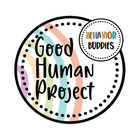
Reflection Journal for Speeches and Presentations

Self- Reflection for Speeches and Presentations

Student Led Conferences Templates, Editable Printable Forms , Teacher Student
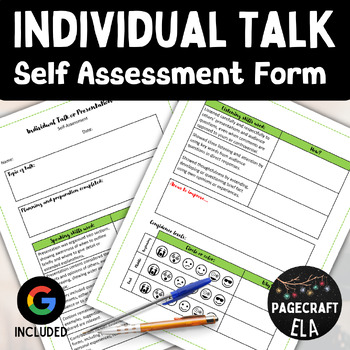
Individual Talk Self Assessment Evaluation and Reflection Form
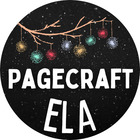
Post Debate Self Reflection Google Form

Music History Monday Google Form Reflection
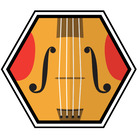
Conference Data Sheet and Student Reflection

Field Trips , Assemblies, Presentations - Before, During & After Notes Sheets
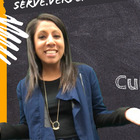
ESL ELD Secondary End of Year Reflection & Summer Plans Student Slides Project

Digital Data Notebook for Google Classroom
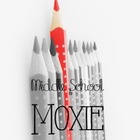
Tolerance | SEL Presentation | Strategies | Skills | Questions | Middle School

- We're hiring
- Help & FAQ
- Privacy policy
- Student privacy
- Terms of service
- Tell us what you think
- Our Mission
5 Activities That Promote Reflection in the Classroom
The metacognitive work of reflecting on learning boosts engagement and encourages the development of critical thinking skills.

Reflection is a powerful tool for enhancing learning and knowledge acquisition and is essential for teachers and students. When students engage in reflective thinking, they are better able to analyze and evaluate their experiences, which enables them to extract meaning and actively process what they have learned and to make sense of it. By taking the time to engage in the metacognitive practice of thinking and reflecting on learning, students can make more meaningful connections and gain a deeper understanding of the material, leading to greater long-term retention and application of knowledge.
Reflection also helps students develop metacognitive and social and emotional skills, such as self-awareness and self-regulation, by identifying areas for improvement and setting new goals. These are all important skills for lifelong learning.
5 Learning Activities that Can Foster reflection
To promote reflection, there are many options available that provide students with choices in how to share what they have learned and to engage in reflective practice.
1. Blogging. For students who enjoy writing or jotting down ideas, blogging or journaling can be a great choice. Whether students contribute to a class blog or share it only with their teacher, it enables students to practice their writing skills, reflect on their learning, and potentially receive feedback from their peers. The blog can be on a topic related to their coursework, such as a book review, a reflection on a field trip, or a summary of a research project and what they learned and how the experience was for them.
WeVideo is a neat way for students to compile a series of video reflections and have an artifact of their learning to look back on throughout the year. It also promotes student choice and building digital skills with its editing tools and features. Students can even collaborate with classmates as they reflect.
2. Digital storytelling. Digital storytelling is a popular and engaging option for students who are looking to showcase their knowledge through multimedia. With digital storytelling, students are empowered with choices in how to create a visual representation of their learning in a fun, engaging, and meaningful way. Depending on the tool used, students can include images, video, and audio to share thoughts and reflections of learning.
StoryJumper is a digital storytelling platform that promotes student choice and voice in learning. Students can choose different background scenes, characters, and props and record audio for their books. Books can easily be shared with a QR code.
3. Making mind maps. Creating graphic organizers or mind maps can be another way to boost visualization of learning and for students to present their thought processes, ideas, and connections between different concepts they have learned. Mind maps can promote critical thinking and creativity skills, as well as helping students evaluate how well they understand complex topics and develop a deeper understanding of the material.
Ideamapper is a tool that can be used by students and teachers for creating a mind map. There are many templates available to start with that make it easy to process learning, creating visualizations that help students reflect on concepts learned and make connections, leading to better content retention.
4. Podcasting. For students who prefer speaking rather than writing to communicate their thoughts and ideas, podcasts are a great option. I started my own podcast as a way to reflect on my teaching practices and also to share what I was learning and how it impacted my classroom. By creating a podcast, students can explore their communication skills, delve deeper into a topic, and have a thoughtful discussion with classmates or simply a conversation with themselves that they can listen to and process for further reflection.
Students can create an episode to talk about a current event or a specific area of study, or to self-assess their learning experiences. Students can provide their unique perspective and insights on a topic while refining their speaking and communication skills. They will articulate their ideas more clearly, structure their thoughts, and engage in conversation, all of which also benefit their SEL skills.
Soundtrap for Education offers students and teachers many resources for getting started with podcasting in the classroom. Soundtrap also has lesson plans on a variety of topics and content areas for educators to explore and start podcasting with students right away.
5. Building digital portfolios. Digital portfolios are a great way to have students track their progress. Through a portfolio, they can build a narrative of their work and have a space to reflect on their progress and set goals.
Spaces EDU is a digital portfolio platform that helps teachers gain a deeper understanding of students’ interests, needs, and learning styles. Students can track their growth over time, identifying strengths and areas where they can set new goals. This information is critical in supporting reflective practice, allowing teachers to adjust their teaching strategies to better serve each student’s unique needs.
Wakelet offers many possibilities for classroom use. Students can have their own Wakelet to add artifacts of work and create a digital portfolio, as well as record Flip videos to reflect on their learning. Flip has been a very beneficial tool in my classroom for several years. Whether students record videos to share their ideas or respond to prompts, it offers many choices that provide authentic and engaging learning and reflection opportunities for students.
Benefits of reflection
Reflection promotes self-awareness and self-improvement and helps students identify strengths and weaknesses, set goals, and develop strategies to improve their learning outcomes. We want students to take ownership of their learning and become more active and engaged learners.
Reflective practices also enhance critical thinking and problem-solving skills. When we engage in the metacognitive process of thinking about thinking, we develop greater awareness of our learning experiences. Students will develop a habit of self-reflection that will enable them to better adapt to new challenges, learn from experiences, and continue to grow and develop as they prepare for the future.
- SUGGESTED TOPICS
- The Magazine
- Newsletters
- Managing Yourself
- Managing Teams
- Work-life Balance
- The Big Idea
- Data & Visuals
- Reading Lists
- Case Selections
- HBR Learning
- Topic Feeds
- Account Settings
- Email Preferences
What It Takes to Give a Great Presentation
- Carmine Gallo

Five tips to set yourself apart.
Never underestimate the power of great communication. It can help you land the job of your dreams, attract investors to back your idea, or elevate your stature within your organization. But while there are plenty of good speakers in the world, you can set yourself apart out by being the person who can deliver something great over and over. Here are a few tips for business professionals who want to move from being good speakers to great ones: be concise (the fewer words, the better); never use bullet points (photos and images paired together are more memorable); don’t underestimate the power of your voice (raise and lower it for emphasis); give your audience something extra (unexpected moments will grab their attention); rehearse (the best speakers are the best because they practice — a lot).
I was sitting across the table from a Silicon Valley CEO who had pioneered a technology that touches many of our lives — the flash memory that stores data on smartphones, digital cameras, and computers. He was a frequent guest on CNBC and had been delivering business presentations for at least 20 years before we met. And yet, the CEO wanted to sharpen his public speaking skills.
- Carmine Gallo is a Harvard University instructor, keynote speaker, and author of 10 books translated into 40 languages. Gallo is the author of The Bezos Blueprint: Communication Secrets of the World’s Greatest Salesman (St. Martin’s Press).
Partner Center
- Media centre

Search the HCPC
Popular searches.
- the care act 2014
- care act 2014
- registration certificate
Recent searches
Suggestions.
- {{search.Title}}
Reflective practice template
This template is intended to help you guide your own activities.
Remember, there is no set way to reflect and you can adapt these activities to suit your learning style and your role.
Download - Reflective Practice Template
- Reflective Practice Template Adobe PDF Document 150Kb Adobe PDF icon
- Reflective Practice Template - Word Word Document 45Kb Word icon
Our Awesome Intercultural Community
The story of us: eapp 8385 spring 16.

Self Reflection on 1st Presentation
Self-Critique of my first presentation Presenter: Drilona Aliu
Description of Experience
Since I was the last one to present in class, I had the advantage of seeing everyone else presenting and catching on their strategies. It seemed that all the previous presenters were very comfortable on presenting and they rarely showed any sign on nervousness. Usually, I am able to control my nervousness by giving a “talk” to myself and I imagine myself as the subject matter expert. By having these positive thoughts in my mind, I am able to control nervousness that may be created as a result of the fear of talking in front of people and sharing something very personal such as part of my childhood.
The most challenging aspect of this presentation was creating a meaningful story through an effective framework that would transmit my emotions as a child and my journey to learn English. I find it very challenging when I have a lot to share but do not know how to properly deliver my message in a logical order. While watching the DVD, I was able to identify that this challenge was evident although I tried to hide it as I was speaking. The most surprising aspect of my speech was that I used a lot of facial expressions. This might have always been the case but because I never watched myself presenting I have not been able to identify this habit. I could have done better in certain areas such as volume and speech rate, but I believe that I gave a good overall impression.
I believe that my first speech was effective and kept the audience interested. There is more room to improve upon the introduction and conclusion such as engaging the audience in my opening question: As a child, what did you want to be when you grew up? Such questions are always a good way to start the speech as it keeps the audience interested. I also think that due to time management constraints, I could have done a better job on the conclusion such as ending my speech how this journey affected the path I chose in life. This would “justify” how English has played a role in my life and how he has influenced my personal and professional growth.
I believe that my delivery was generally clear and organized; however, while watching the DVD I noticed that I need to work more on the speech flow and find effective ways to engage the audience. My posture and eye contact were good but I definitely need to work on my speech rate, such as making more pauses so the audience is able to “digest” the information provided and not feel overwhelmed with the amount of the information at a fast pace. I also think I “overdid” my hand gestures and this is something that I need to improve. Being from the Balkan region, it is part of our culture to excessively use hands when we talk. We are very expressive that way and that may be distracting for many people in the audience. There is also room for eliminating fillers such as um as I tend to use them quite a bit, especially in the beginning of my speech.
Overall, I believe that I have many strengths such as the ability to speak without feeling overwhelmed or very nervous, to quickly think and avoid mistakes without getting frustrated (mistakes are for human beings), and to deliver my speech with effective voice projection and eye contact. The main areas for improvement would be to engage the audience as they may relate more to my speech, use fewer facial and hand gestures, speak at a slower pace and make appropriate pauses, and use fewer fillers throughout the speech.
As a result, my goals to improve in public speaking are:
- Effectively organize and clearly deliver my main points. Each main point should be backed up with effective supporting points and examples to make it more illustrative for the audience. The steps I would take to improve on this goal are to develop a detailed speech outline and rehearse it several times while timing itso I do not run out of time.
- Improve my speech rate. I tend to talk too fast and make very few or short pauses. It is my goal to improve my speaking pace so the audience will be able to follow it better. This can be achieved through multiple rehearsals and ability to select only worthy arguments (quantity vs quality).
- Last but not least is hand gesture control. Watching myself on the DVD made me realize that I use my hands a lot when I speak and sometimes that can be distracting for the audience. I need to work on using my hand gestures appropriately and a way to improve that is through recording myself every time I deliver a speech and reviewing it as that is something I do unconsciously.
There are many other things to improve and I am confident that I will be able to incorporate these changes in my next presentation!
- Grades 6-12
- School Leaders
Win a $1,000 gift certificate of your choice! ✨
45 Awesome Must-Use Questions to Encourage Student Reflection and Growth
Reflection questions for before, during, and after a project or lesson.

Teaching our students the importance of reflecting upon their knowledge, work, effort, and learning is super important, but it’s not always that easy.
Reflection questions allow students to think about their thinking.
This kind of questioning allows students to better understand how they are working or learning so they can make changes and adjustments from there. Reflection takes time, and often students think that once their work is complete, they should be finished. Often, the younger the student, the more difficult it can be to get them to reflect on what they’ve done.
Here are a few of our favorite reflection questions to use in your instruction. Adjust or edit these questions to meet your students’ needs.
Before students begin their work:
- What do I know about this topic or subject?
- What would I like to learn about this topic or subject?
- Where will I find the information I need for this assignment?
- What kinds of research do I need to do?
- Do I fully understand the question or prompt?
- How can I break down the assignment into smaller parts?
- Did I give myself ample time to really think about this assignment and brainstorm possible solutions?
- Who can help me get what I need to complete this work?
- What tools or supplies should I use for this assignment?
- How will I be assessed for this project?
- Do I understand all parts of the rubric or scoring guide?
- What are my goals for this assignment?
- What do I need to do in order to meet those goals?
- How will this assignment be turned in to my teacher?
- Do I know the due date for this project, and am I able to meet it?
[contextly_auto_sidebar]
While students are working:
- What have I learned so far?
- What else do I need to know in order to finish this task?
- Can I make a few predictions about what will happen next?
- How well am I using my time?
- Am I answering all parts of the questions completely?
- Which parts of this assignment are easy for me?
- Which parts of this assignment are challenging for me?
- Does my work reflect my effort thus far?
- Am I putting forth my best effort in my work?
- Are the sources I am using reliable?
- Am I citing my sources properly?
- How close am I to achieving my original goals with this assignment?
- Are the goals I set before I began this assignment still reasonable? Do I need to readjust them?
- If possible, can I ask my teacher or a classmate for feedback on my current progress on this assignment?
- Am I learning interesting information as I work on this project?
After students finish their work or assignment:
- What new information have I learned from this assignment?
- What surprised me about what I learned?
- How quickly was I able to finish this work?
- Where were my roadblocks?
- How did I move through roadblocks or challenges?
- Is my work adapted for the correct, appropriate audience?
- How closely did I follow the parameters of the assignment?
- Using the grade rubric, how would I score my own work?
- What would the teacher say about my work?
- If given the opportunity, one thing I would change about this assignment is …
- How does my work compare to what my classmates did on this assignment?
- Does my work truly reflect my effort?
- Have I achieved the goal I set for myself with this assignment?
- What would I do differently next time, if given the chance?
- Am I proud of my work?
Do you want a short one-page printable of all of these questions to guide your instruction?
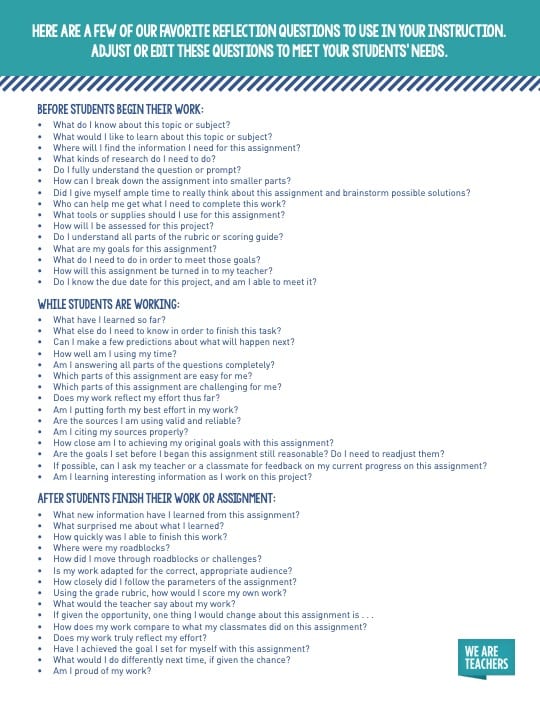
Grab the printable version here.
What other questions would you add to this list? Come and share in our WeAreTeachers Chat group on Facebook.
Plus, check out our big list of critical thinking questions and growth mindset posters.
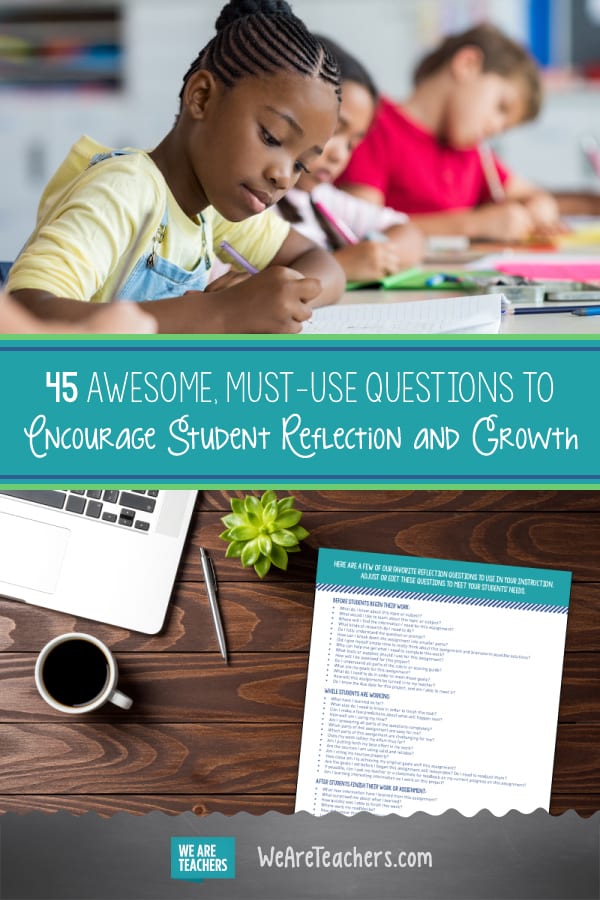
You Might Also Like

10 Books to Read When You Feel Stuck in Your Job
C'mon baby, light that fire! Continue Reading
Copyright © 2024. All rights reserved. 5335 Gate Parkway, Jacksonville, FL 32256

IMAGES
COMMENTS
Reflection Assignment. Recording the presentation is the first step, but students will need to thoughtfully watch their presentations to see areas for improvement. To guide the students' thoughts while they watch their presentation video, I developed three sequential reflection assignments, one for each of the major presentations in my class.
Self-evaluation after a presentation Giving a presentation at university is a learning opportunity, so it is always a good idea to reflect on how to improve for next time. Use the following questions to support your reflection. If the answer to any of the questions is 'no', decide what action you will take to improve for next time. Content
PRESENTATION REFLECTION FORM Name of Student: Z#: Title of Presentation attended: Presenter(s): Did you find the presentation informative? Yes No What one or two things did you learn from the topic discussed? Did the topic relate to your academic major and/or goals? If so, how? What more would you like to know about the topic? ...
111.3_shetty_reflections. REFLECTIONS ON PRESENTATION. Now that you have completed this presentation, let's discuss what we learned. 1. Name three interesting facts you learned about your classmates when you were watching the presentations: 2. Did you find anything in common between your hometown or culture and the hometown and culture of ...
Examples of student written reflection are included in this document. textile and needlework. role play. melodies. By engaging in diverse forms of reflection, students may discover their preferred ways to reflect and integrate reflection by choice into their daily lives.
Oral presentations: reflection sheet Record yourself practising your oral presentation. After viewing and/or listening to the recording, reflect on your performance. Rank your performance against the following criteria on a scale of 1-5 (where 5 = excellent and 1= improvements needed).
Oral Presentation Self Evaluation. When you watch the video of your presentation, you will find it helpful to use this form to assess your own performance and to determine your improvement goals. To complete the assessment, you will need to listen to your video once and watch it twice. You should listen to it without watching it, then watch ...
After each presentation, I ask students to fill out the Presentation Reflection form either in class or as homework. It's not graded, but often I will follow up with students and ask them about their reflections. The Presentation Reflection form asks students to consider: By Doing the Presentation, I Learned: I Think I Improved:
Here are a few ideas to help you integrate reflection and student self-assessment throughout the process of learning. Daily Reflection Journals. One of the easiest ways to begin implementing reflection into your classroom is to have students keep a project journal or work log. Provide reflection prompts, or questions, like:
Both the language and the structure are important for academic reflective writing. For the structure you want to mirror an academic essay closely. You want an introduction, a main body, and a conclusion. Academic reflection will require you to both describe the context, analyse it, and make conclusions. However, there is not one set of rules ...
If your reflection statement is less than 400 words, you will need to produce one or two sentences. If you are writing a longer reflection statement of more than 400 words, you will need to write a short introduction. If you are producing an Extension 2 reflection statement, this will need to be a longer and more detailed introductory paragraph.
Self-reflection is one method that you can use to evaluate your presentation. It is an essential component of the evaluation process, enabling you to work on specific areas that you would like to improve upon and to also build upon your current strengths as a speaker. And just like my experience at the Biennale, you may have some 'aha' moments ...
Questions to Ask After a Business Presentation. Can you elaborate on the primary objectives and expected outcomes of this business initiative? How does this strategy align with the overall mission and vision of the company? What are the key performance indicators (KPIs) that you'll be monitoring to gauge success?
Four Steps for Reflection Look, Think, Learn, Plan Look back Think in depth Learn about yourself Plan your next steps Step 1: Look back at a situation or experience Look back at something that happened or some thought you find yourself focusing on and describe it briefly. Step 2: Think in depth about your experience or thought
Oral Presentation Self-Reflection PDF Fillable Form by Jeremy Fellows Bloom's Taxonomy Level: Evaluation I often video record my students' oral presentations (using iPad or Video Camera), either individual or group PPT, Prezi, or other visual media presentations, role-plays, dialogues, individual speaking, etc. The video is then uploaded to my class' private youtube channel where they are ...
Fostering Reflection Skills: The Basics. While reflection has no single, universal definition, Aronson (2011, p. 200) frames it as the "process of analyzing, questioning, and reframing an experience in order to make an assessment of it for the purposes of learning (reflective learning) and/or improve practice (reflective practice)." It has multiple uses in various contexts.
21 Reflection Prompts. Here at Presence, there are five main prompts that we encourage you to use. These are set as the default questions in our software when you start customizing your reflection form. They're simple, broad, and practical. These questions go deeper and deeper as they go on, similar to the way Bloom's Taxonomy works.
Here are 2 great resources to help you feel prepared and keep you organized for your Parent-Teacher Conferences! Included in this bundle is a student self-reflection form, useful for both in-person or virtual students, along with a slides presentation to use for your Parent-Teacher conferences, whether they are in-person or virtual!⭐️ Resource 1:I have 47 Conference slides ready-to-go ...
April 25, 2023. Milko / iStock. Reflection is a powerful tool for enhancing learning and knowledge acquisition and is essential for teachers and students. When students engage in reflective thinking, they are better able to analyze and evaluate their experiences, which enables them to extract meaning and actively process what they have learned ...
Here are a few tips for business professionals who want to move from being good speakers to great ones: be concise (the fewer words, the better); never use bullet points (photos and images paired ...
Reflective practice template. Reflective practice template. This template is intended to help you guide your own activities. Remember, there is no set way to reflect and you can adapt these activities to suit your learning style and your role. Download - Reflective Practice Template. Reflective Practice Template. Adobe PDF Document 150Kb.
Self Reflection on 1st Presentation. Self-Critique of my first presentation Presenter: Drilona Aliu. Description of Experience. Since I was the last one to present in class, I had the advantage of seeing everyone else presenting and catching on their strategies. It seemed that all the previous presenters were very comfortable on presenting and ...
45 Awesome Must-Use Questions to Encourage Student Reflection and Growth. Reflection questions for before, during, and after a project or lesson. Cute pupil writing at desk in classroom at the elementary school. Student girl doing test in primary school. Children writing notes in classroom. African schoolgirl writing on notebook during the lesson.